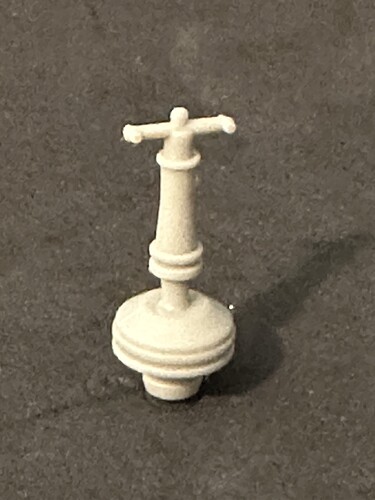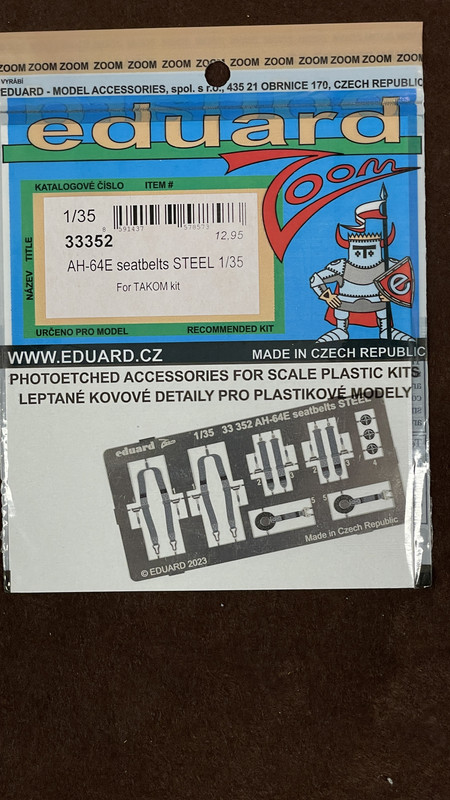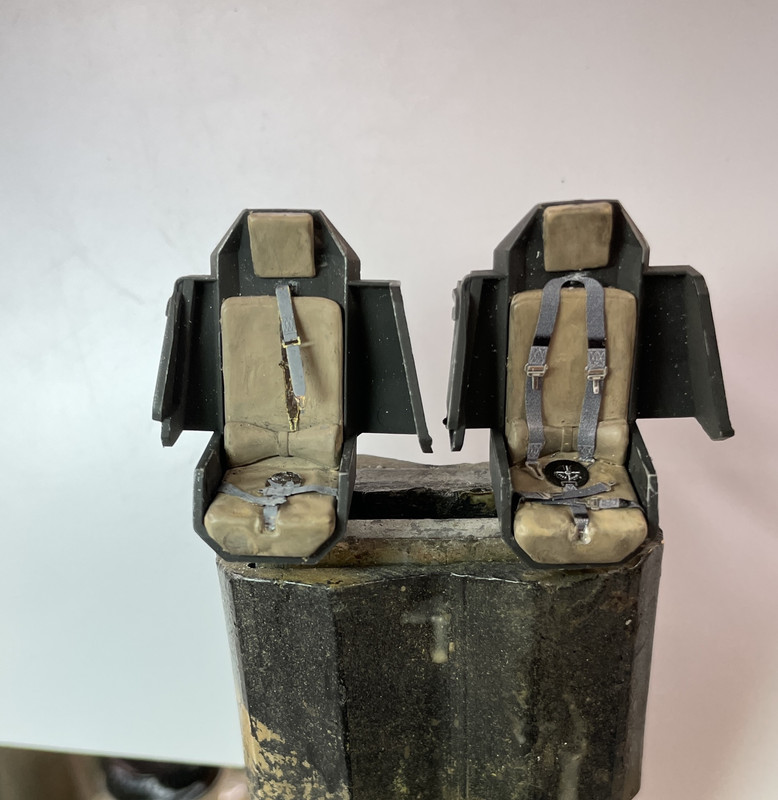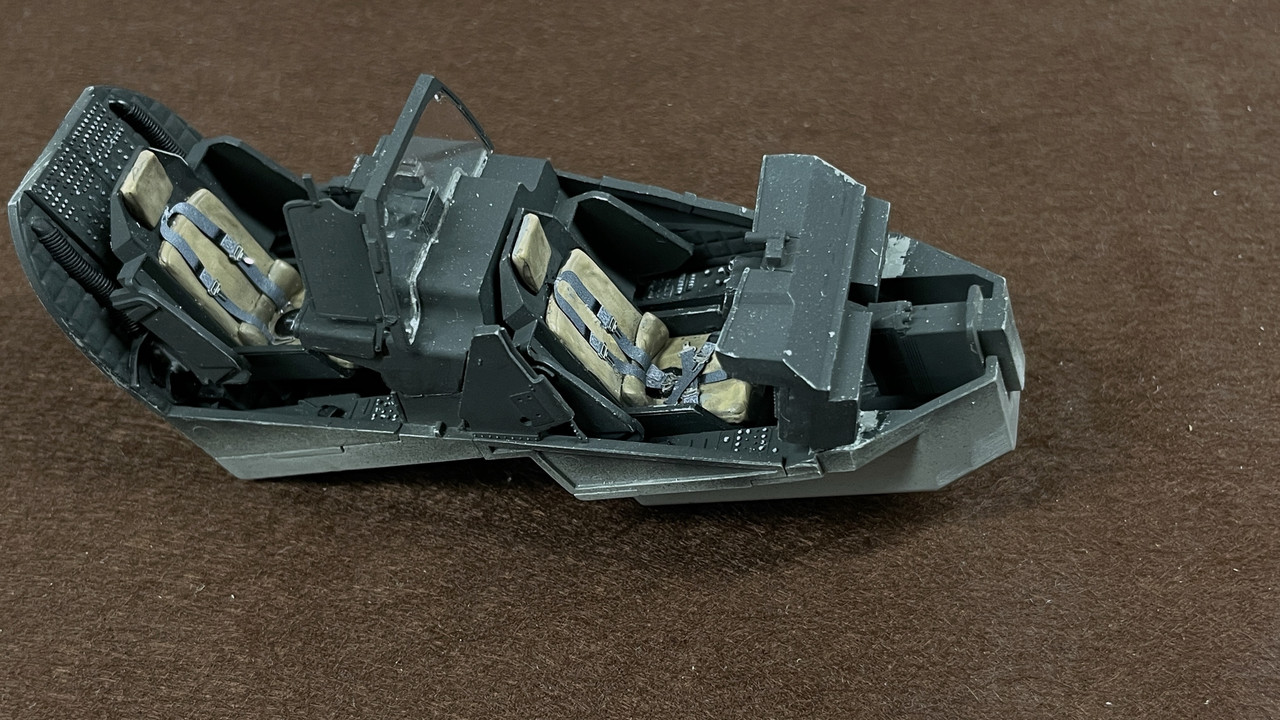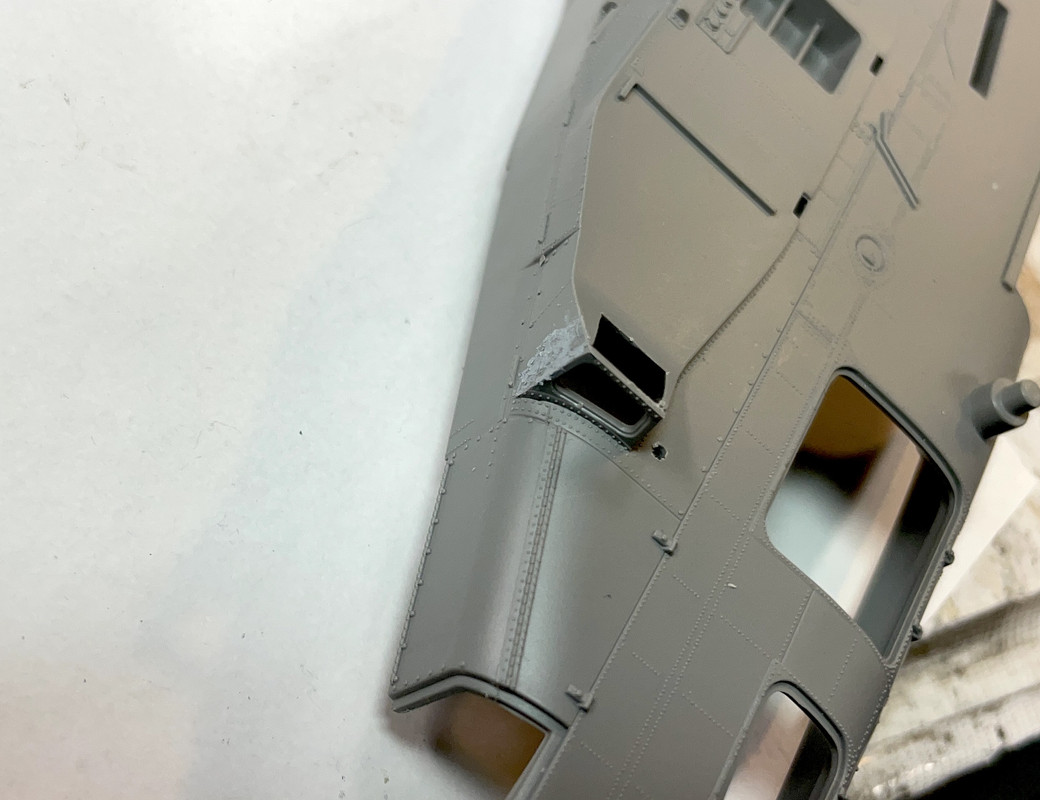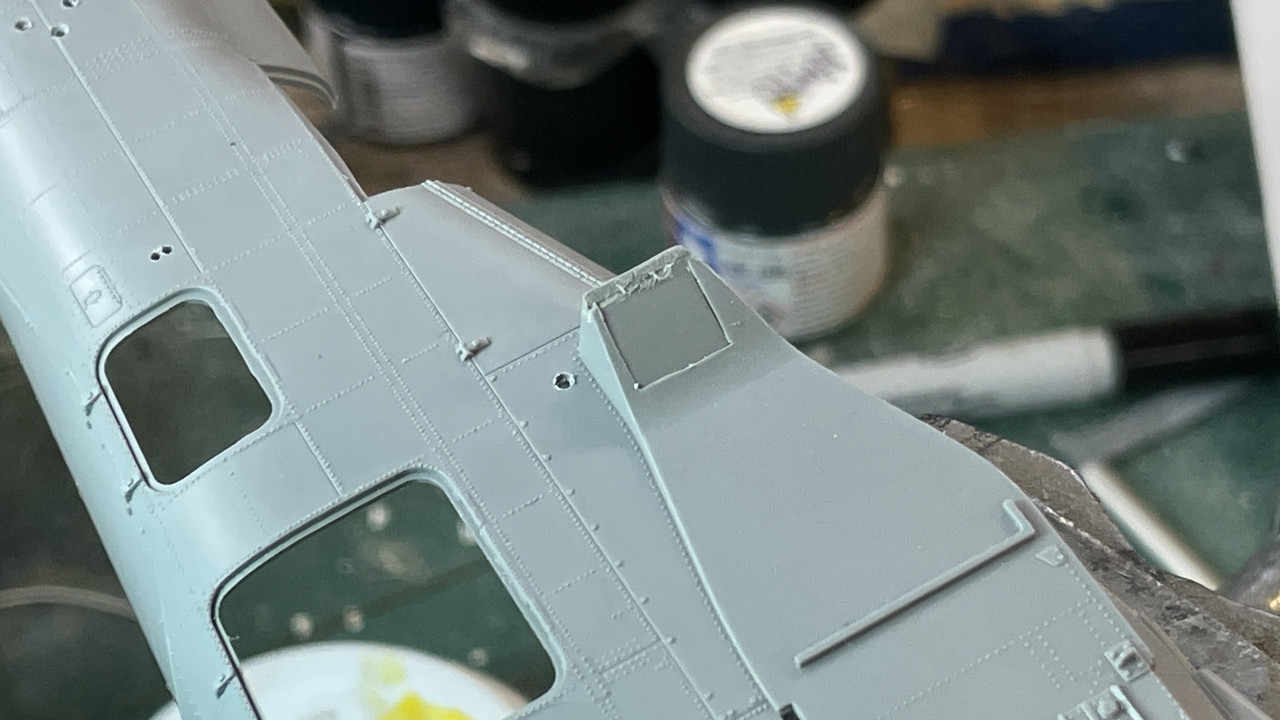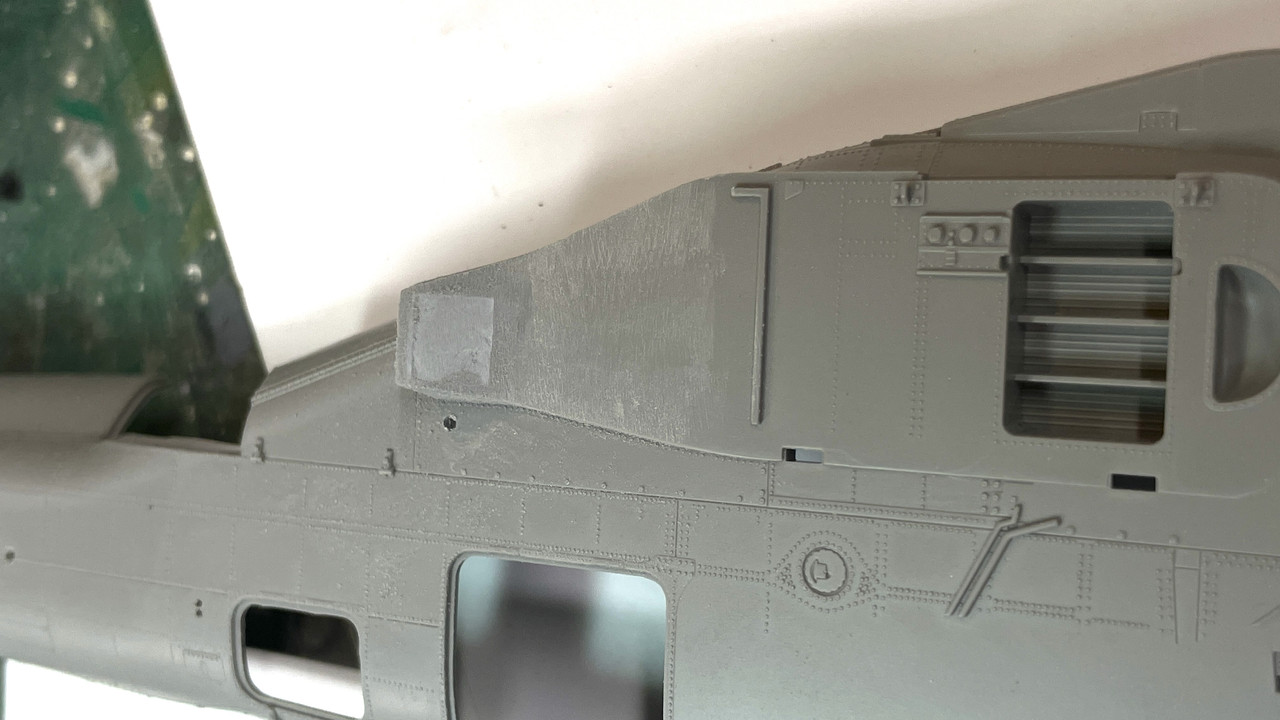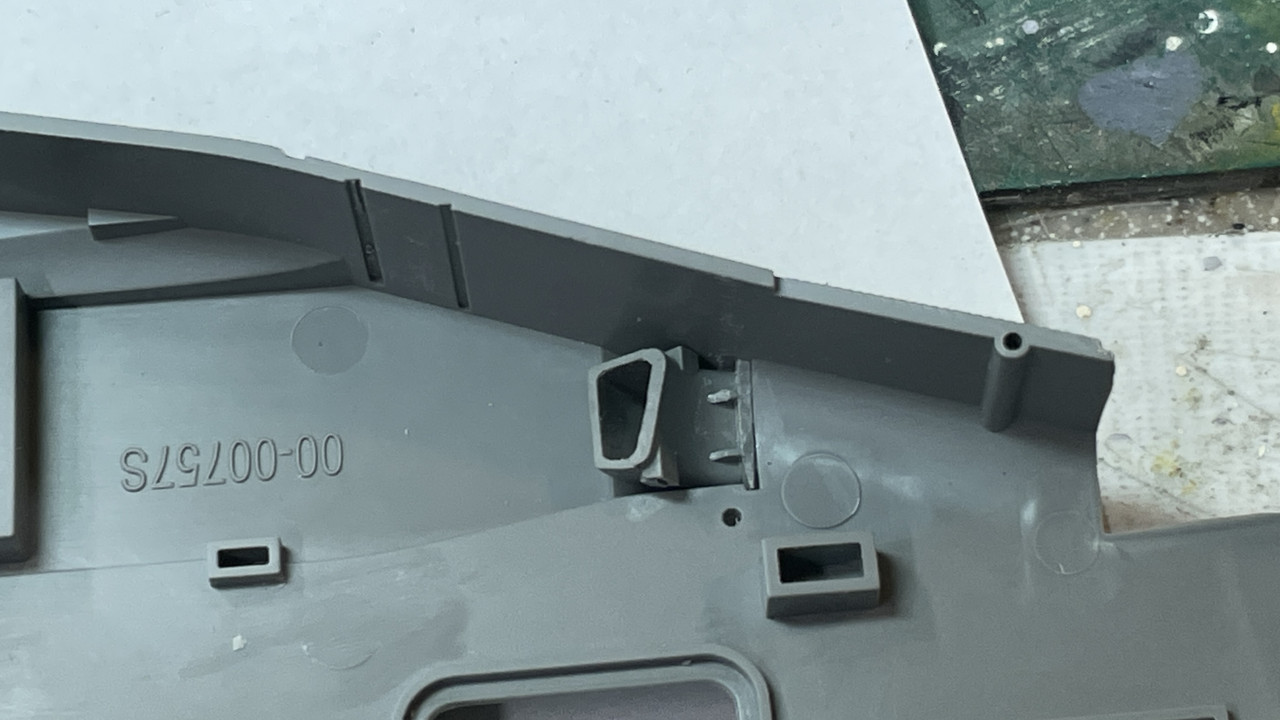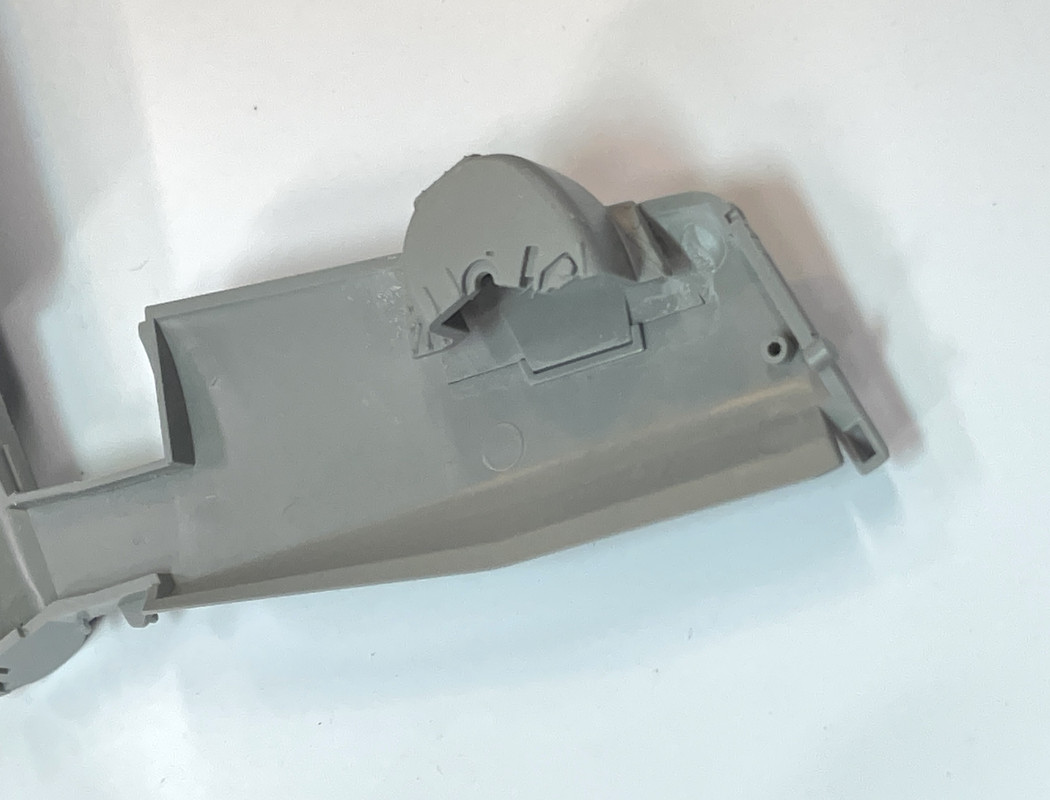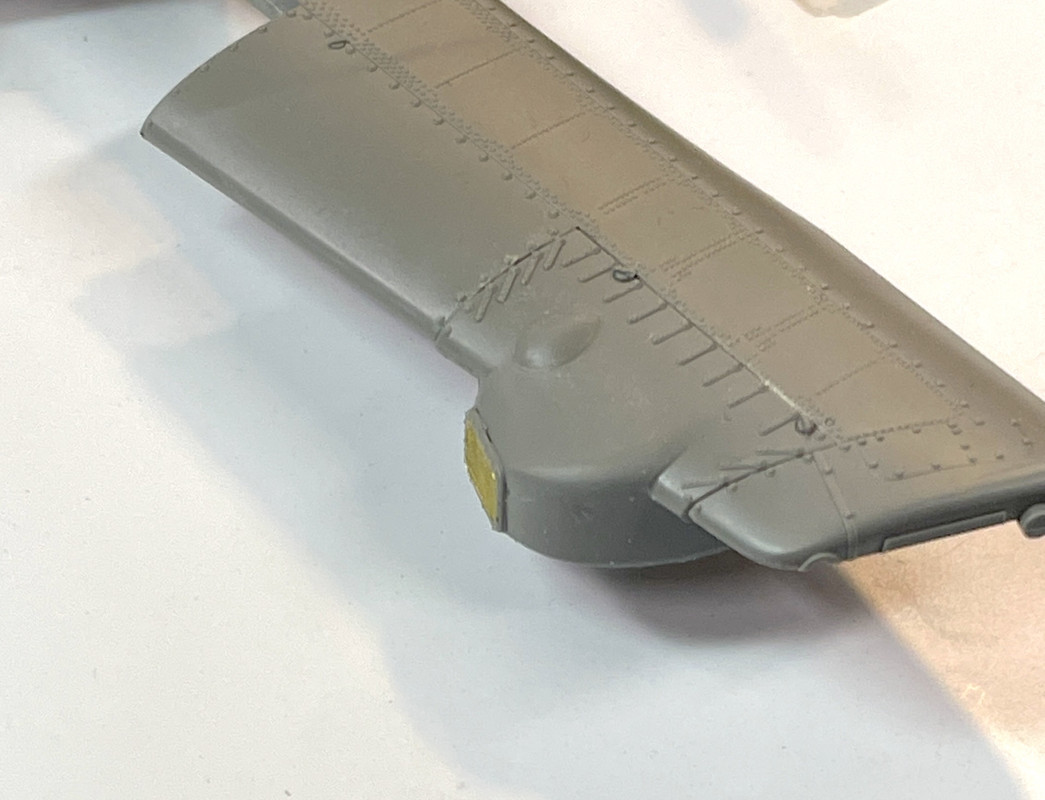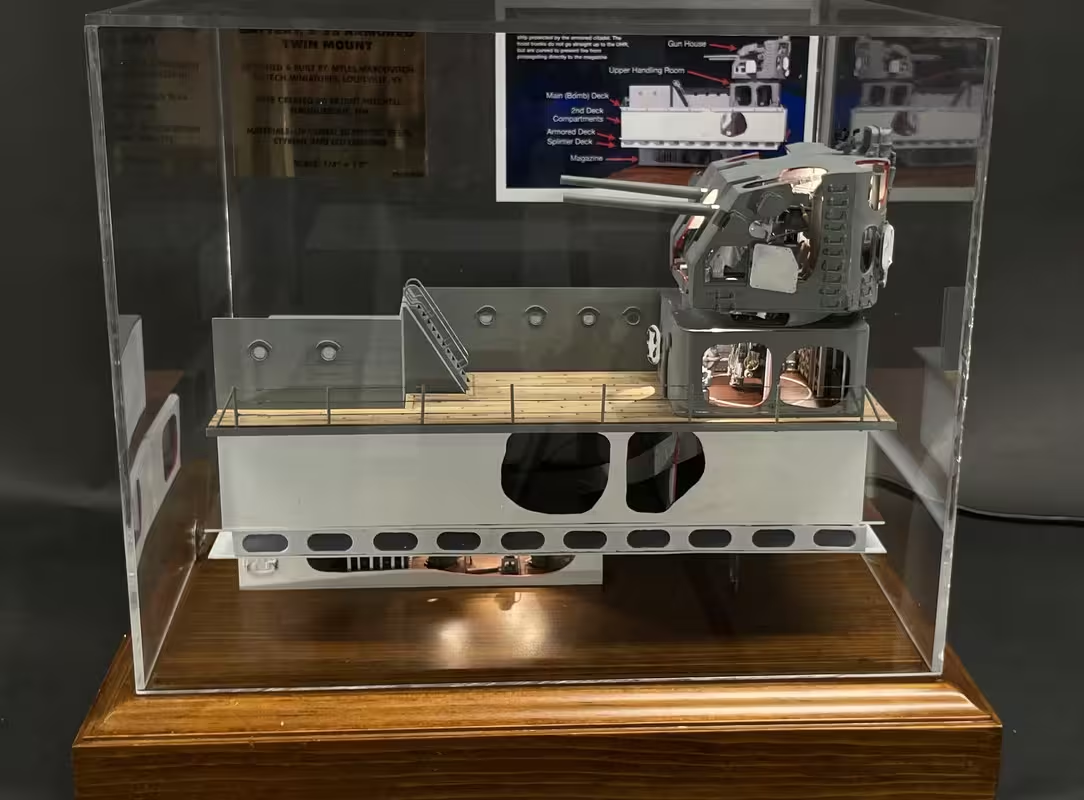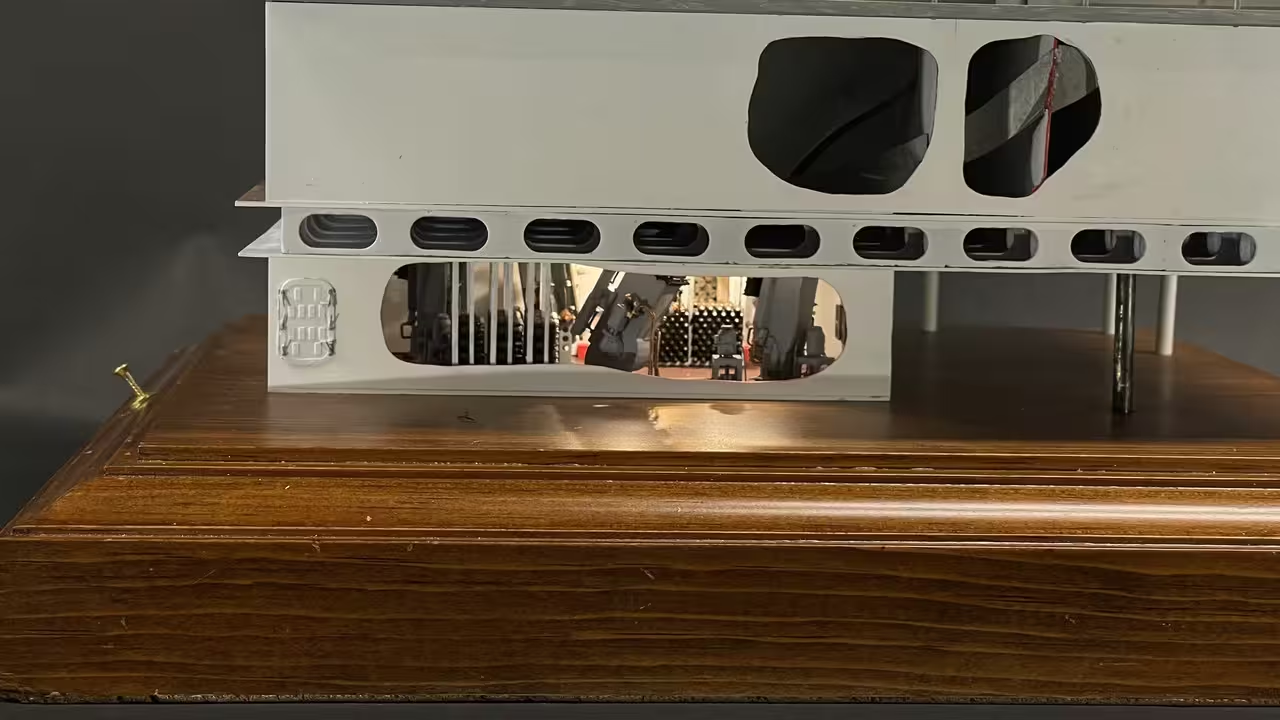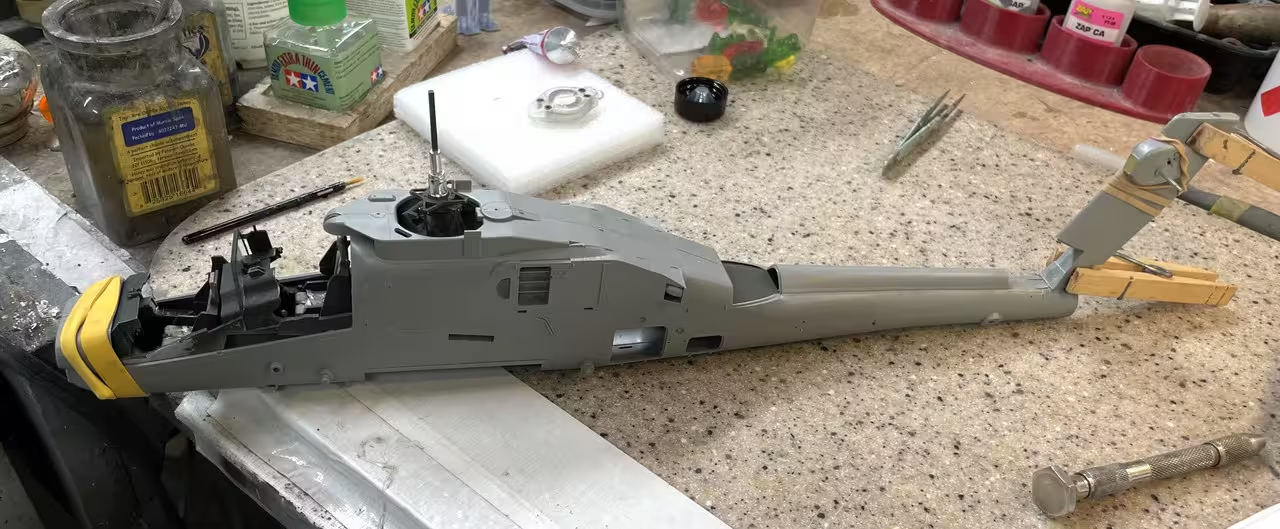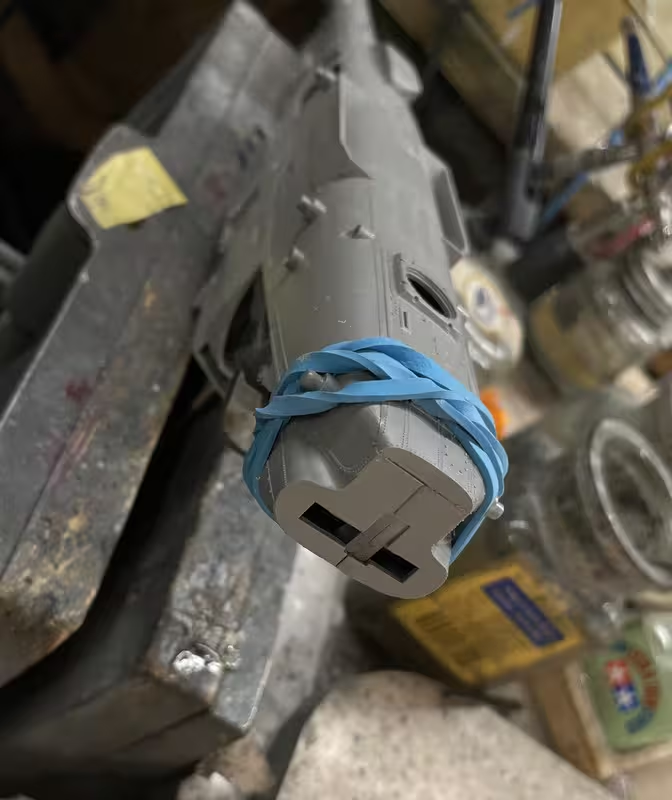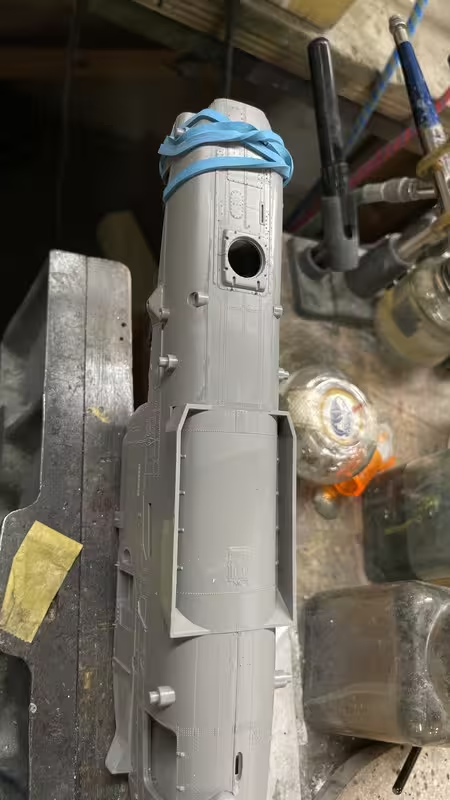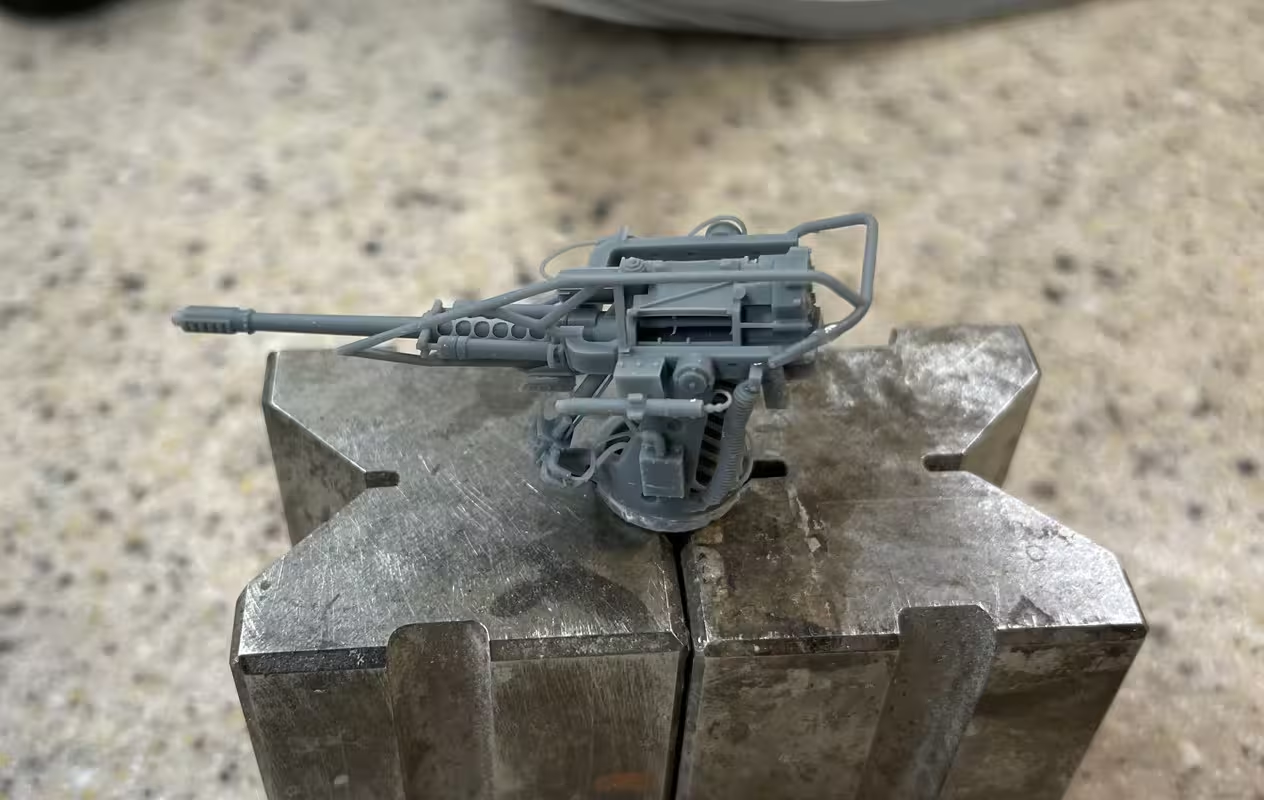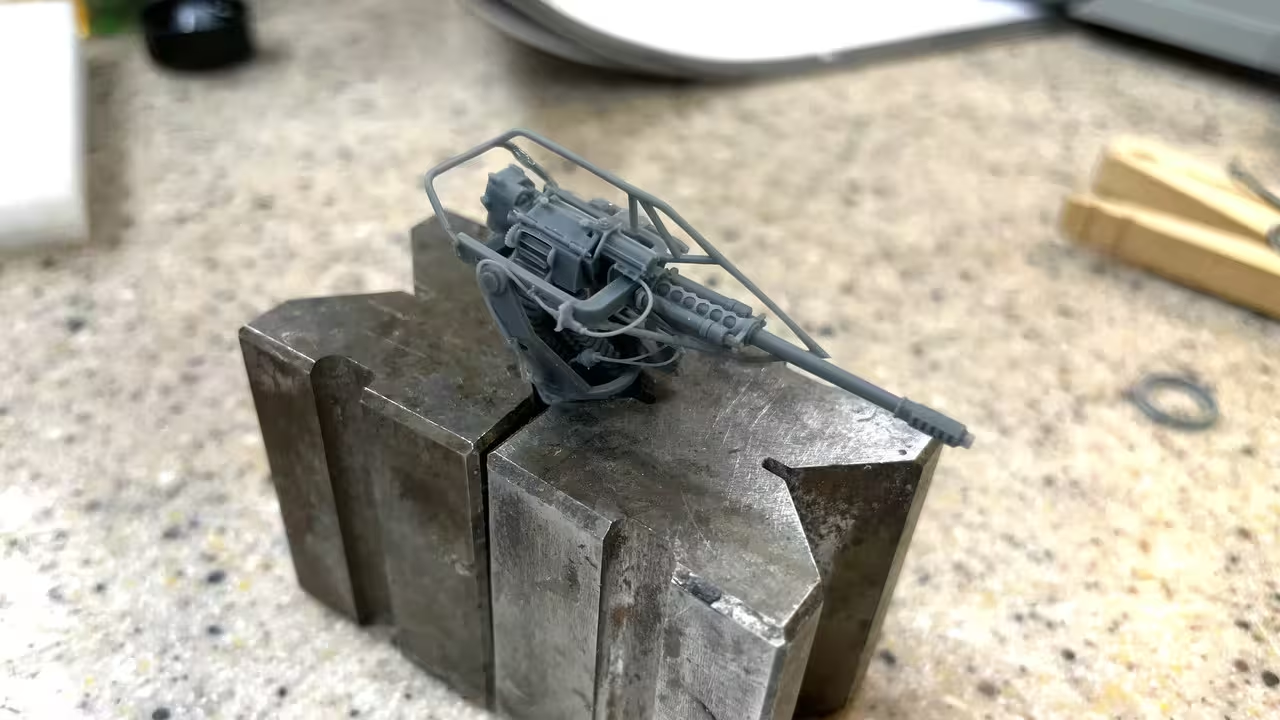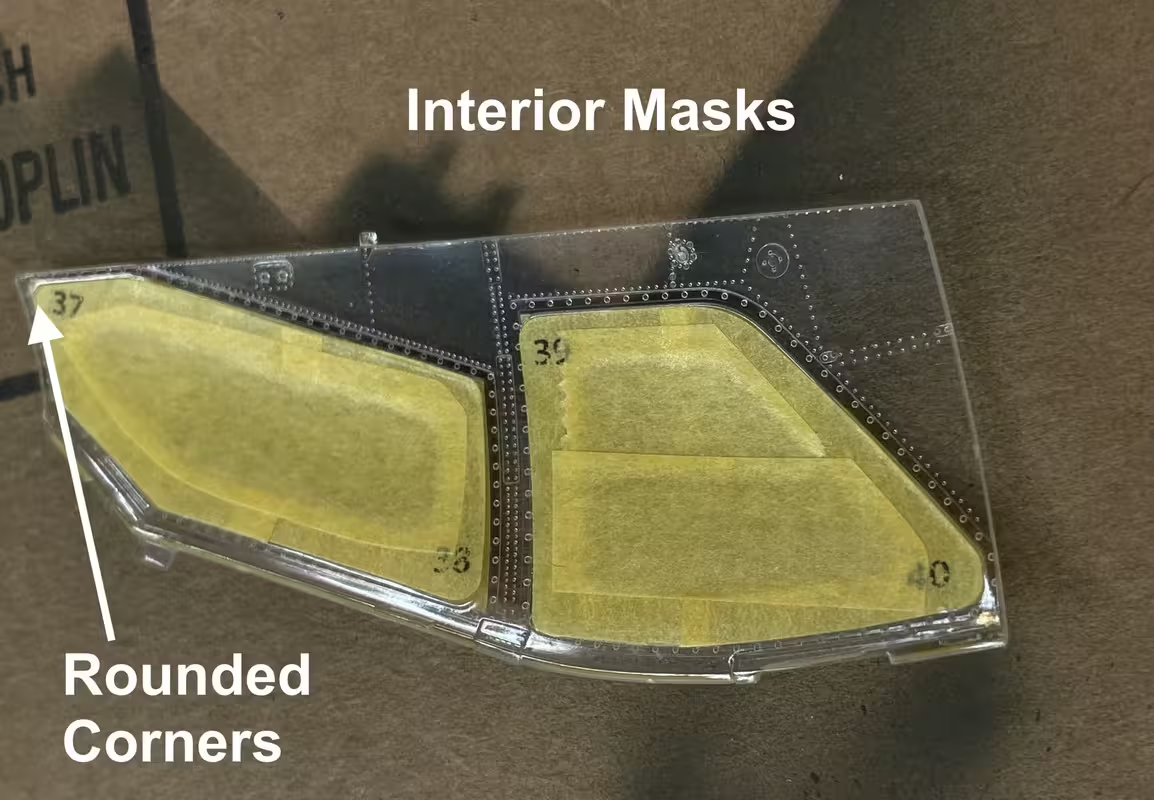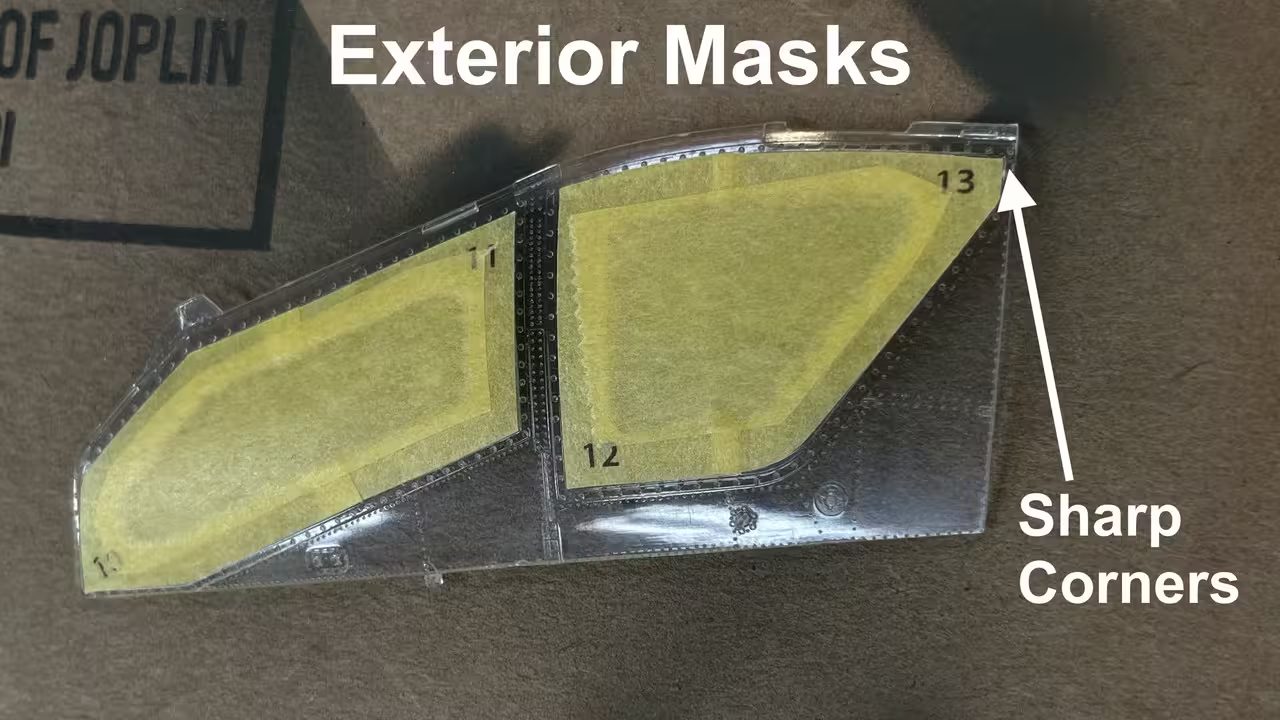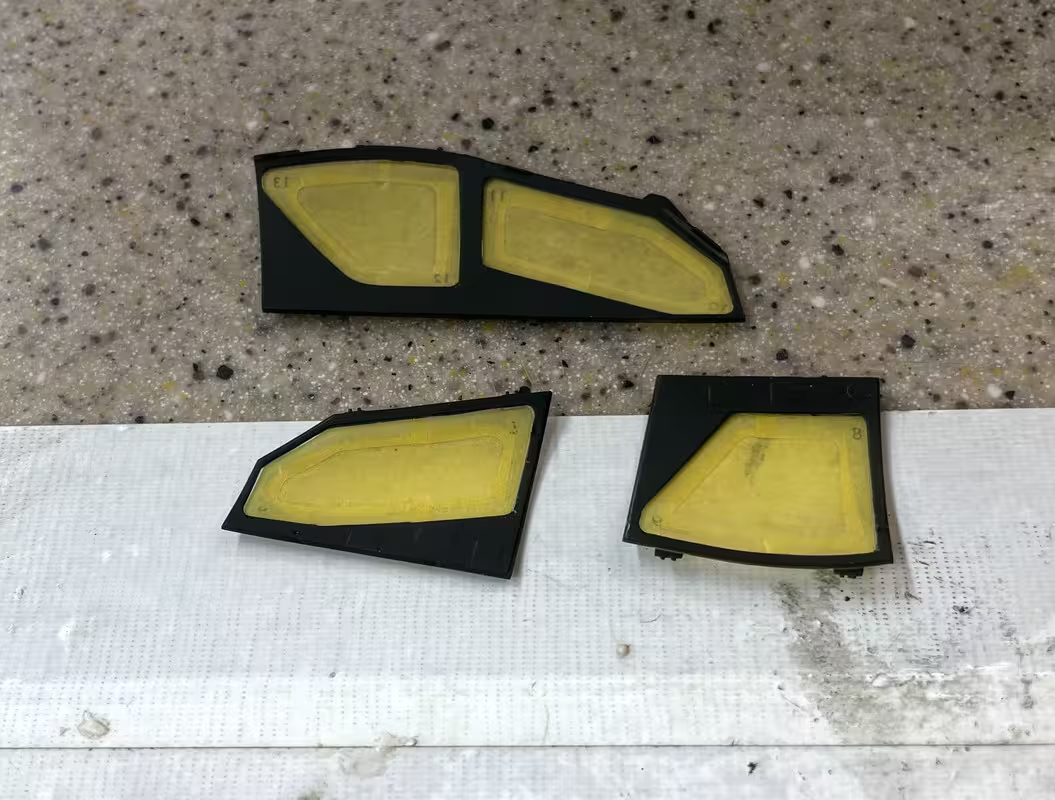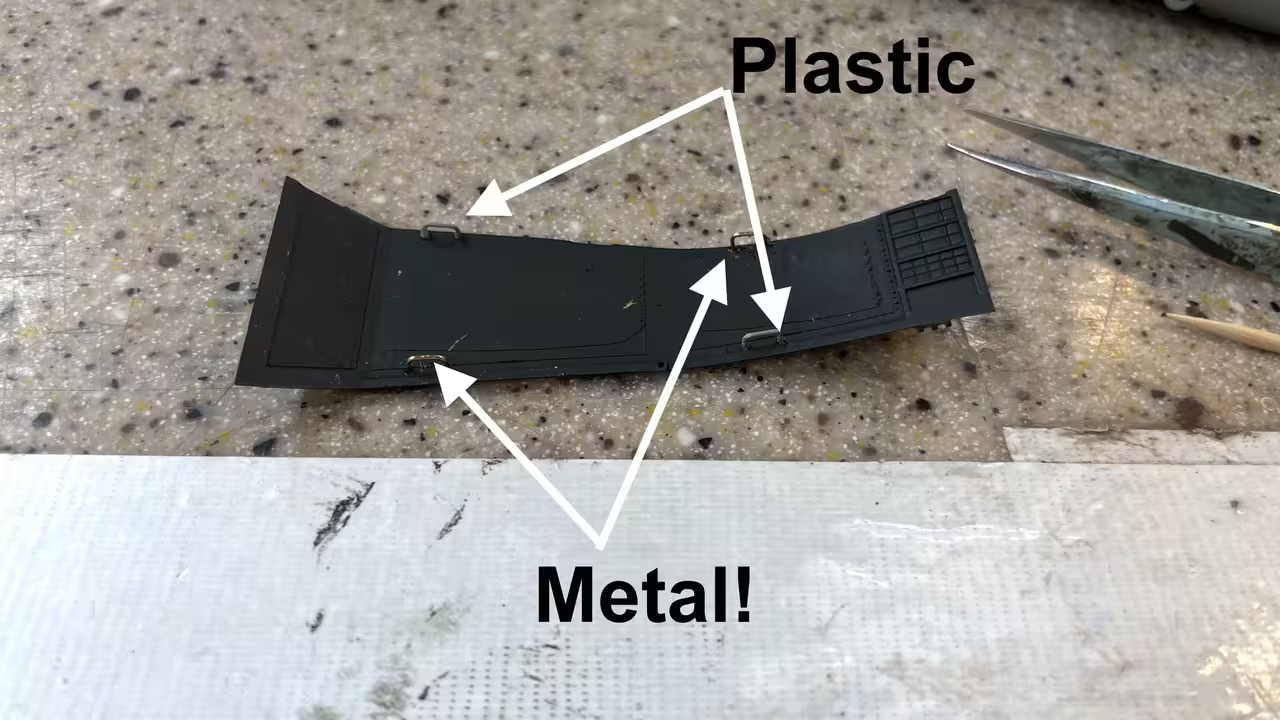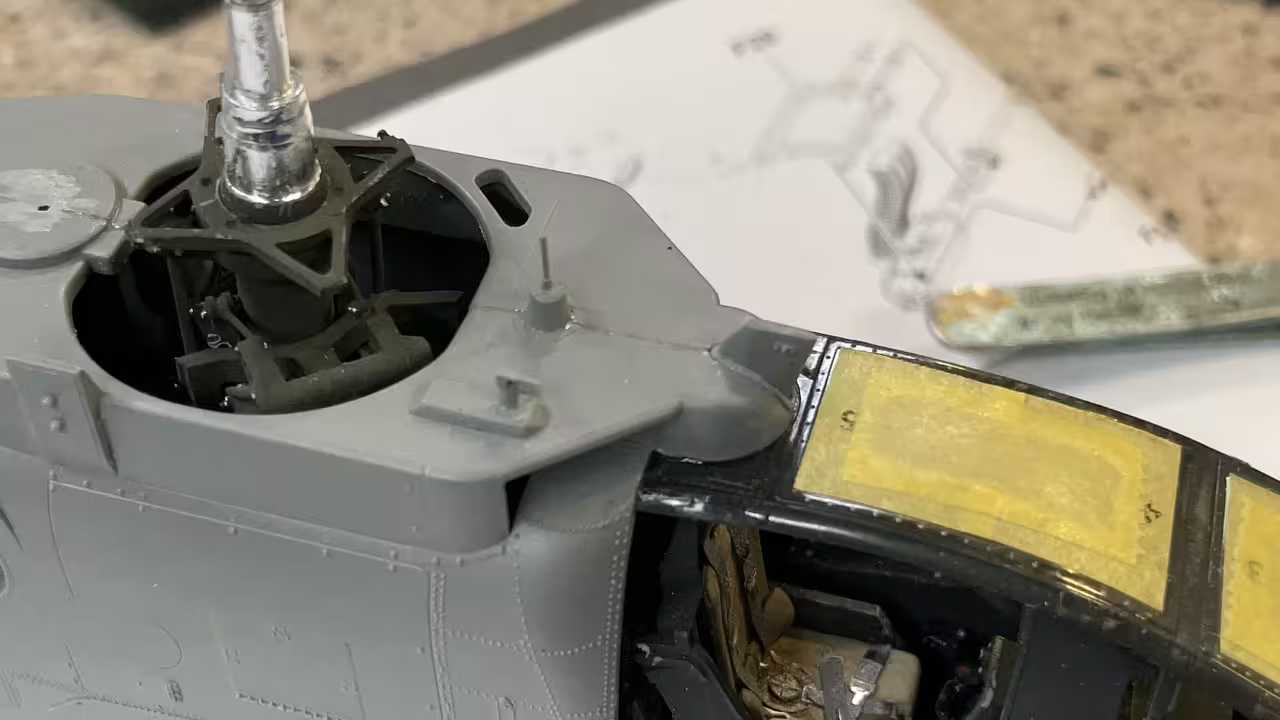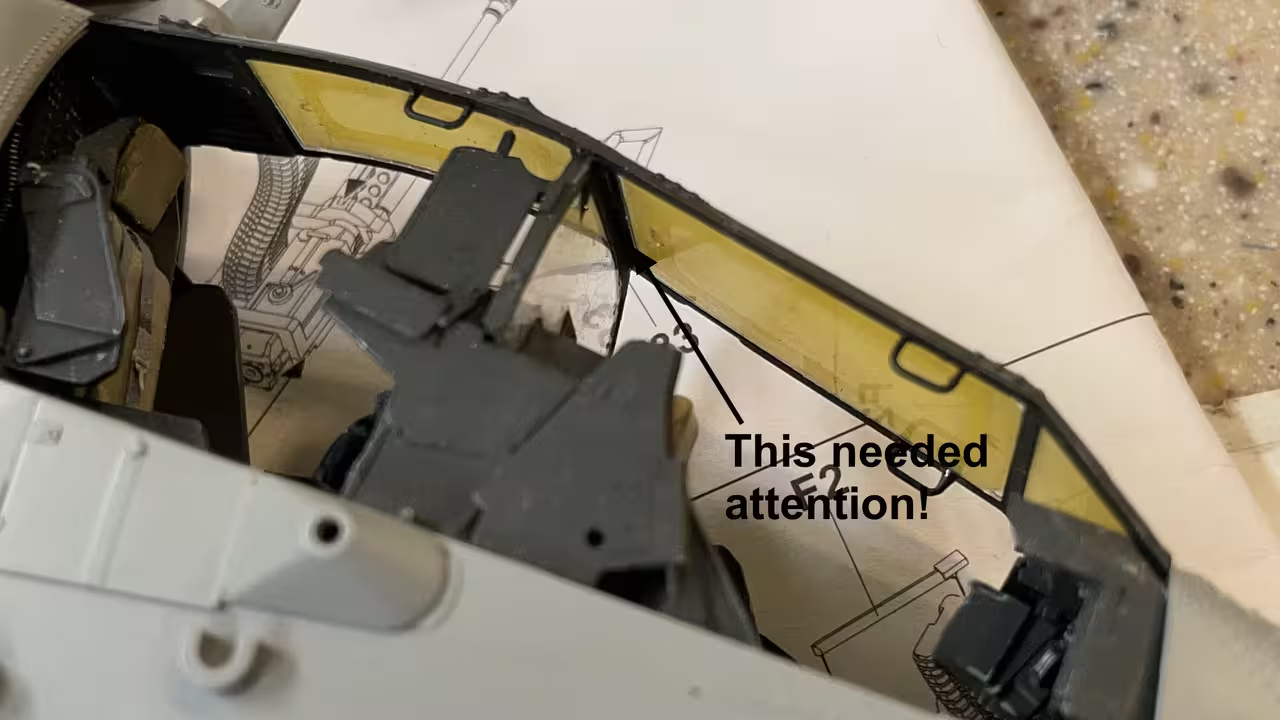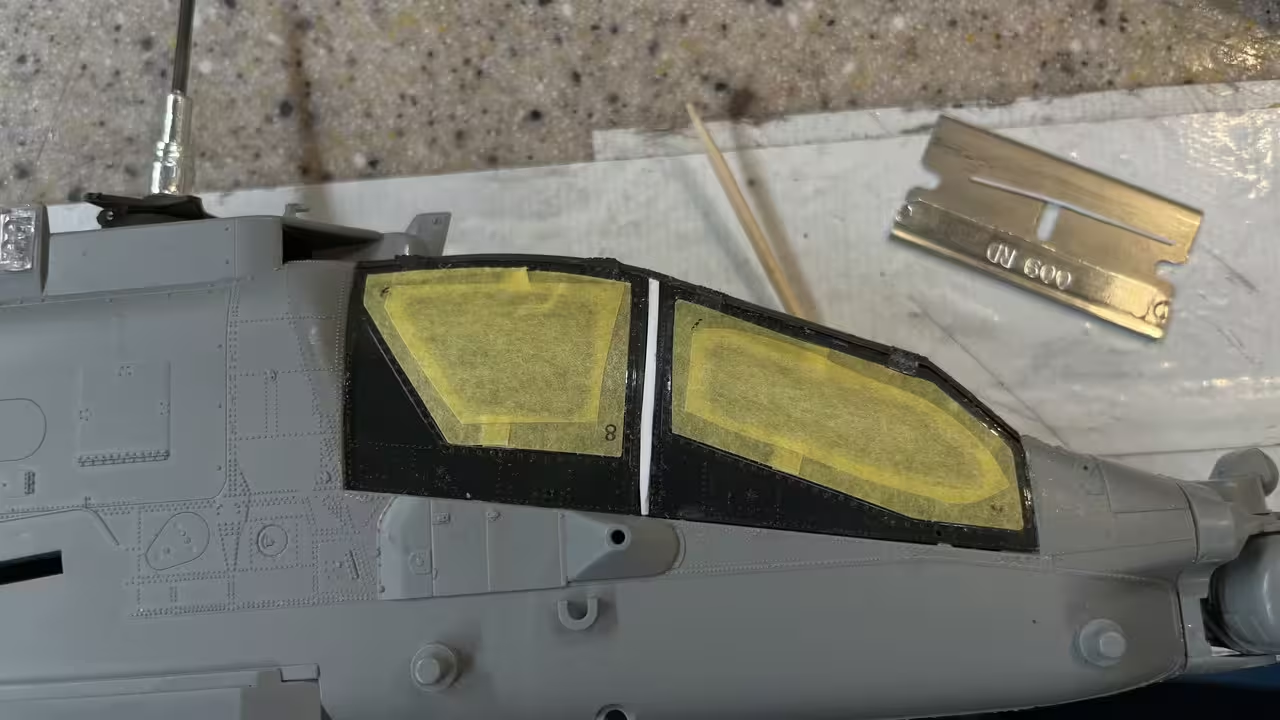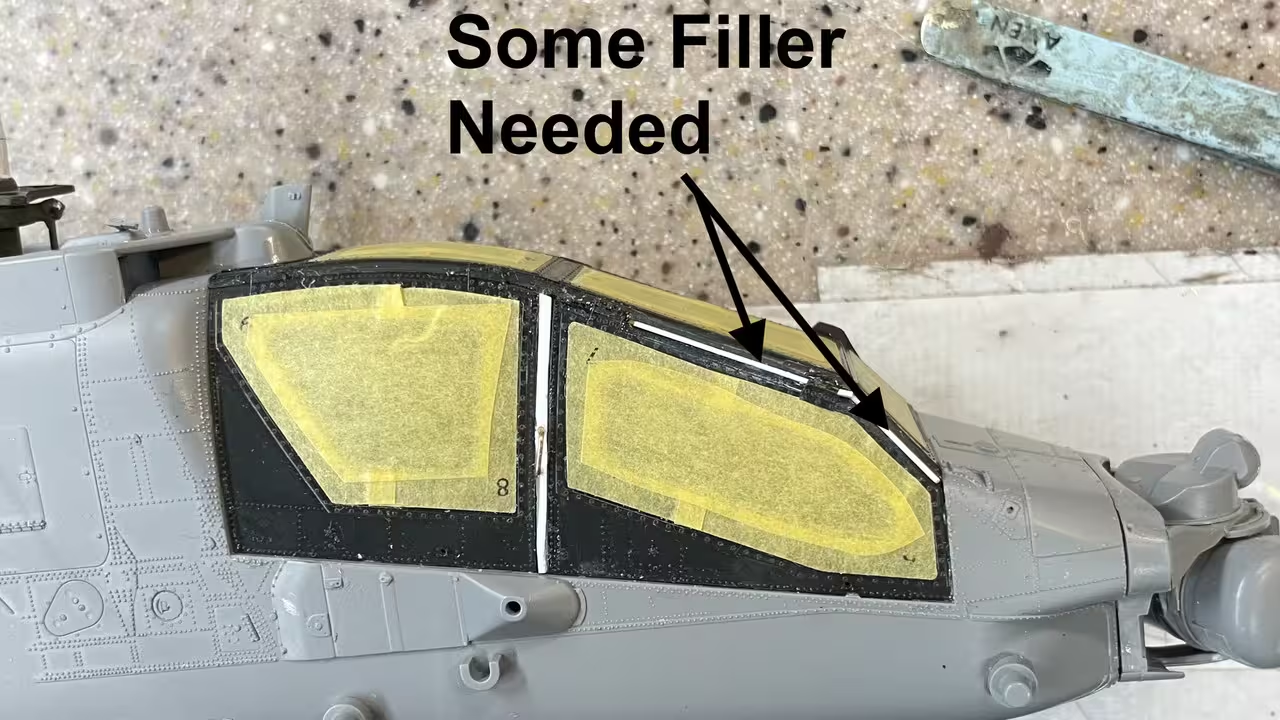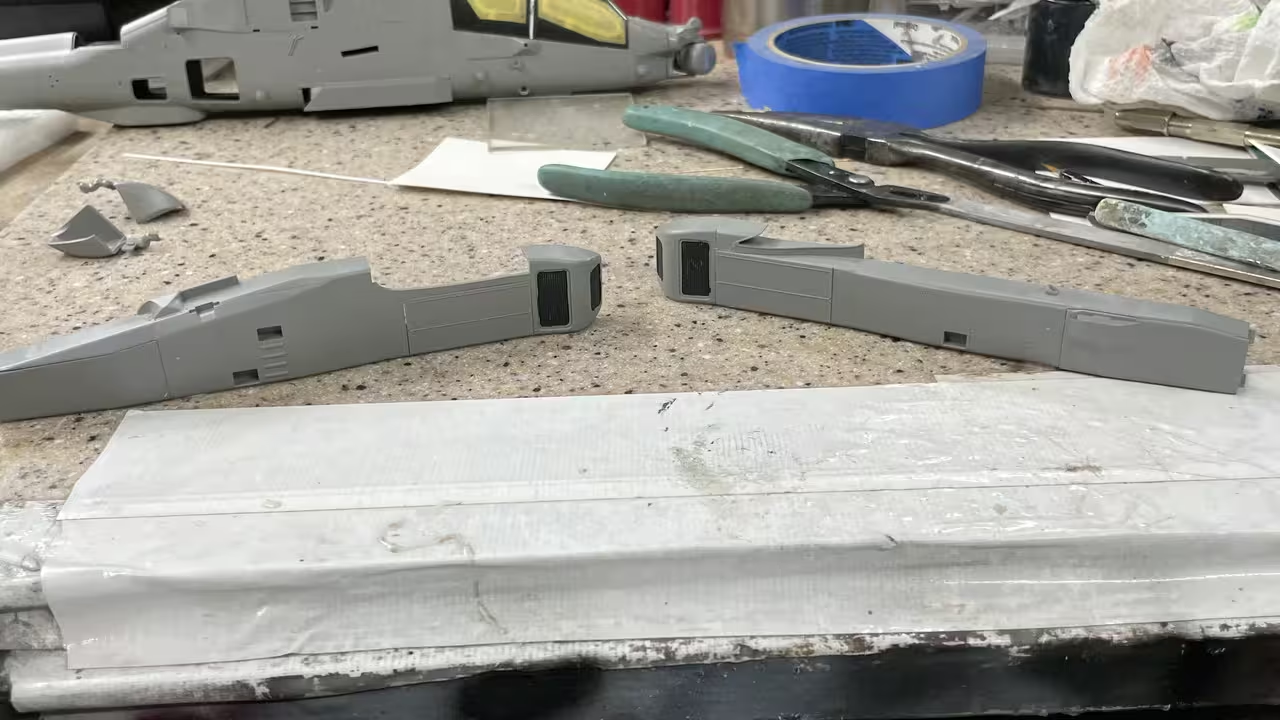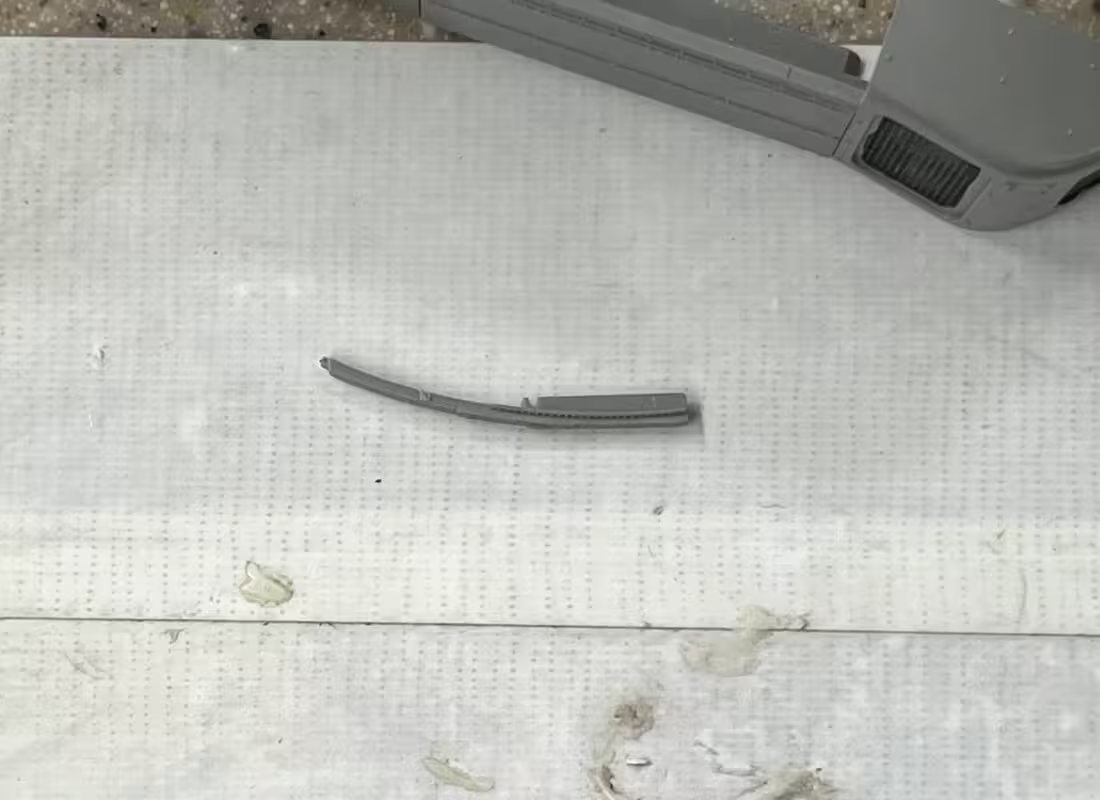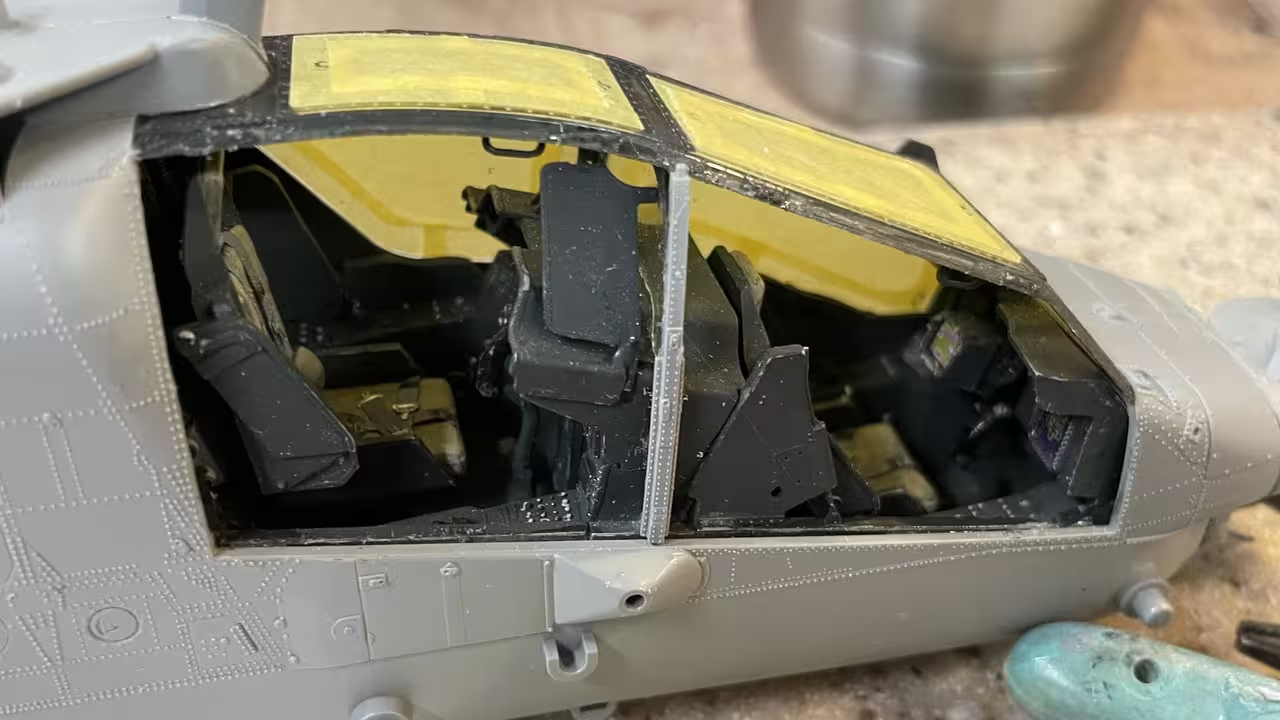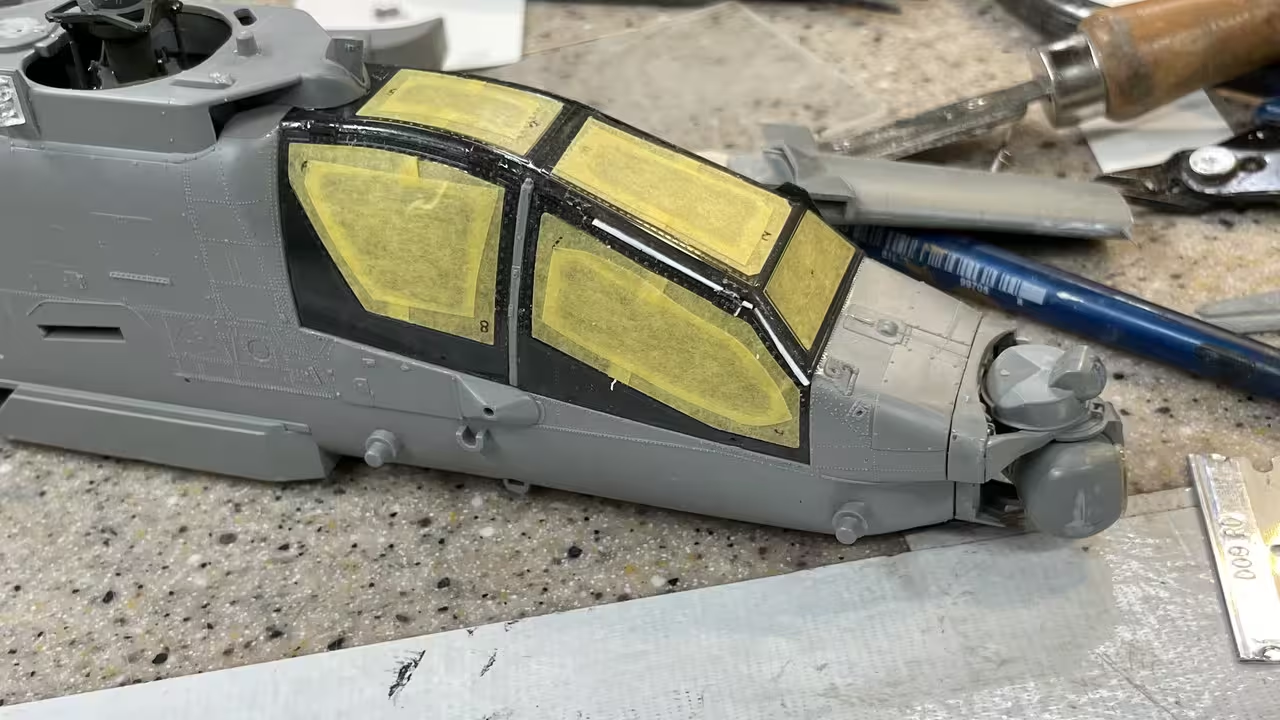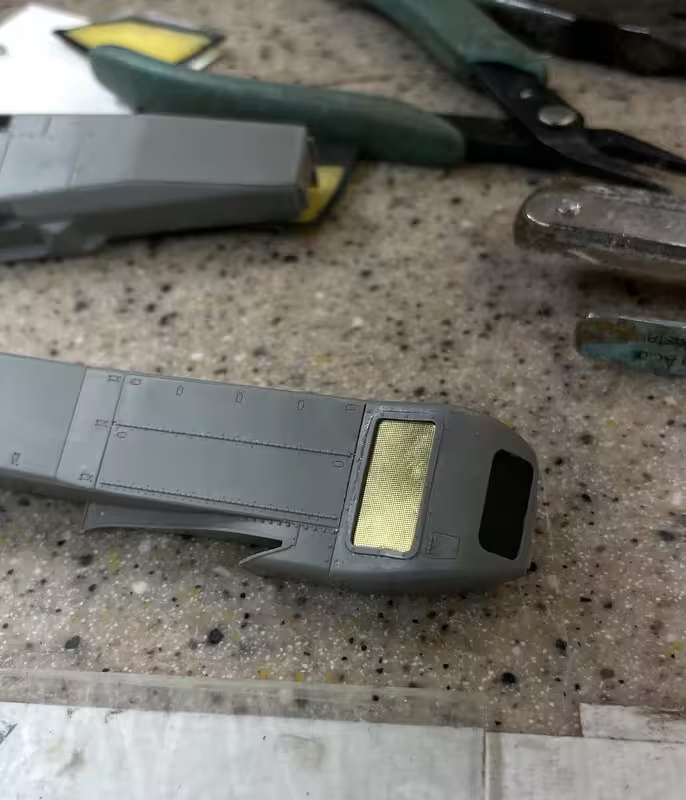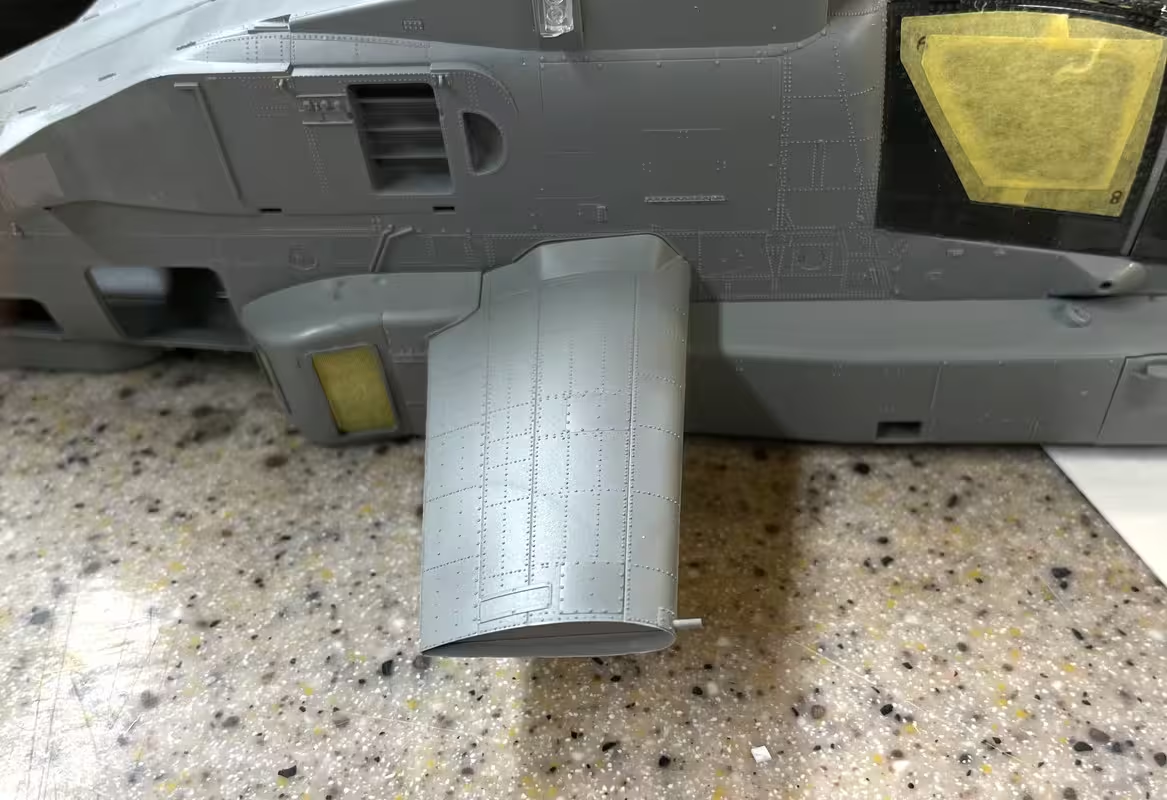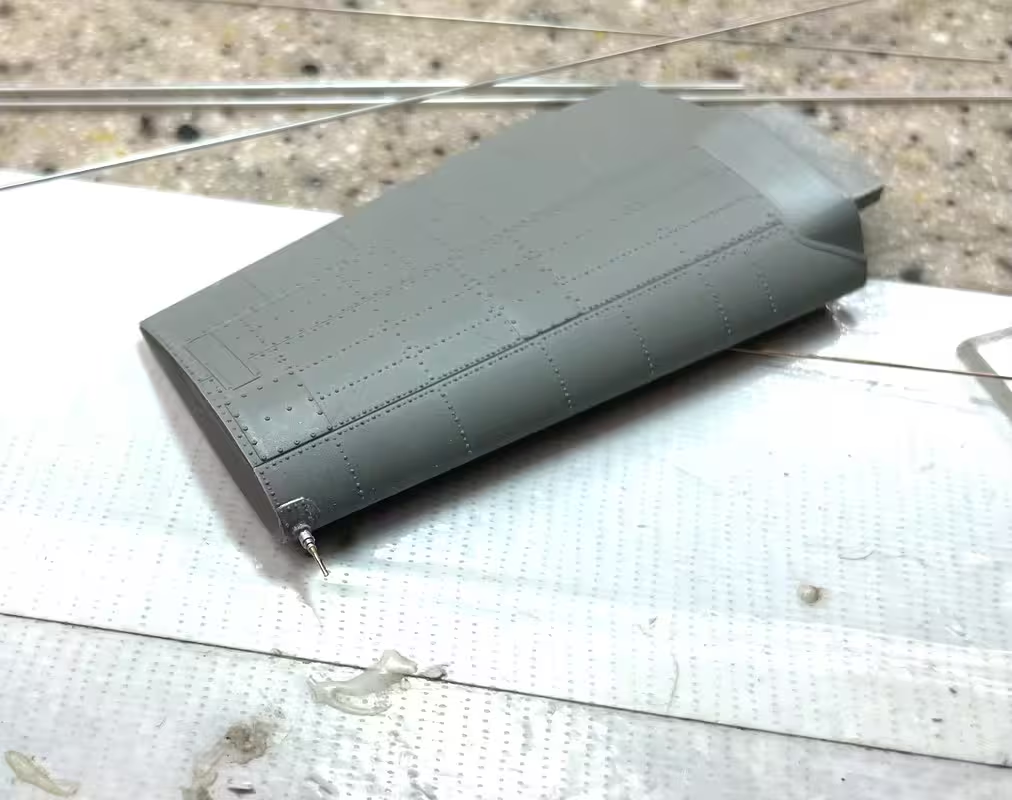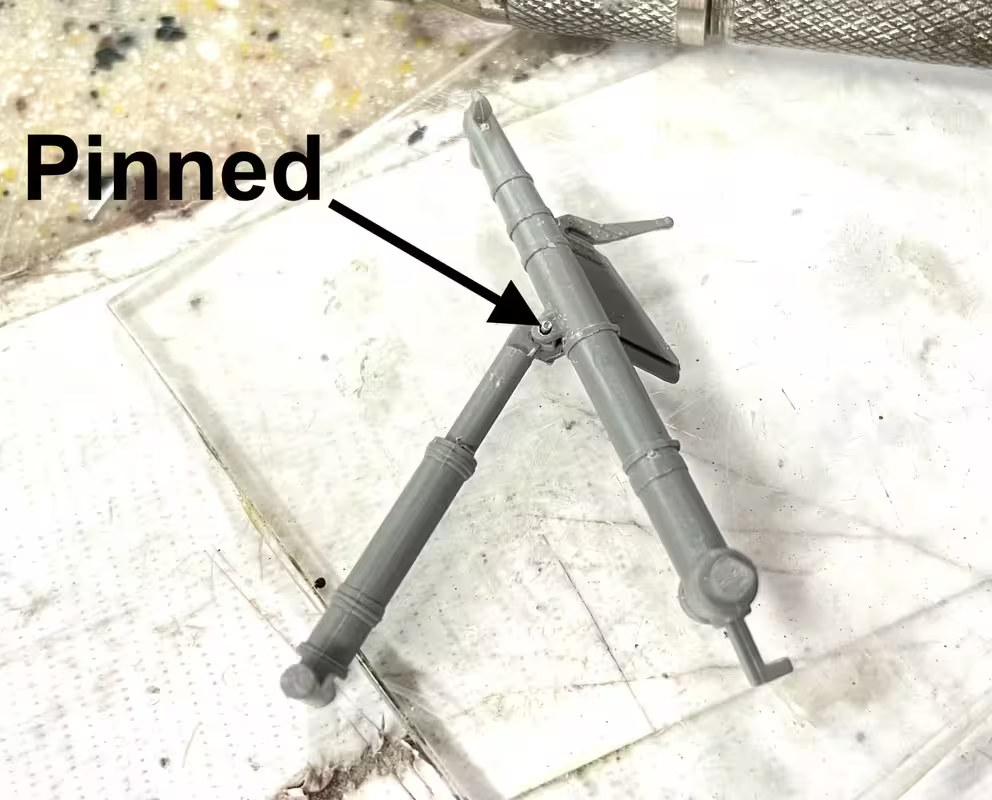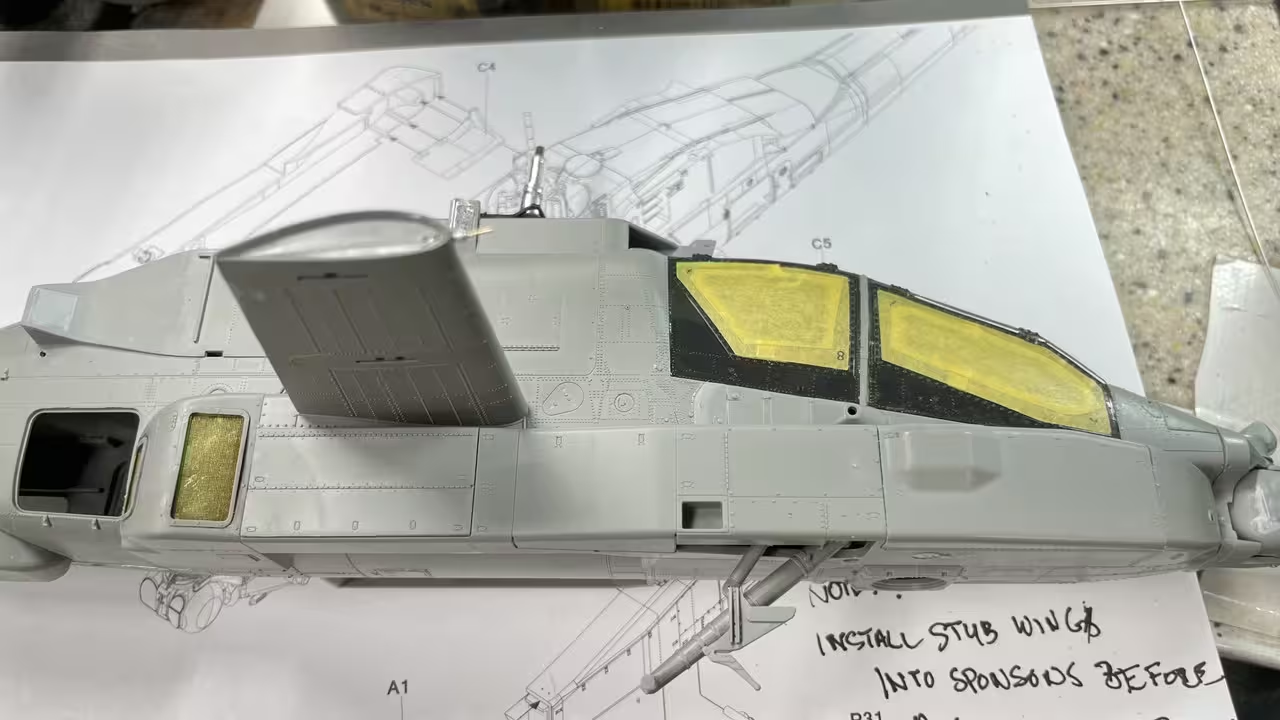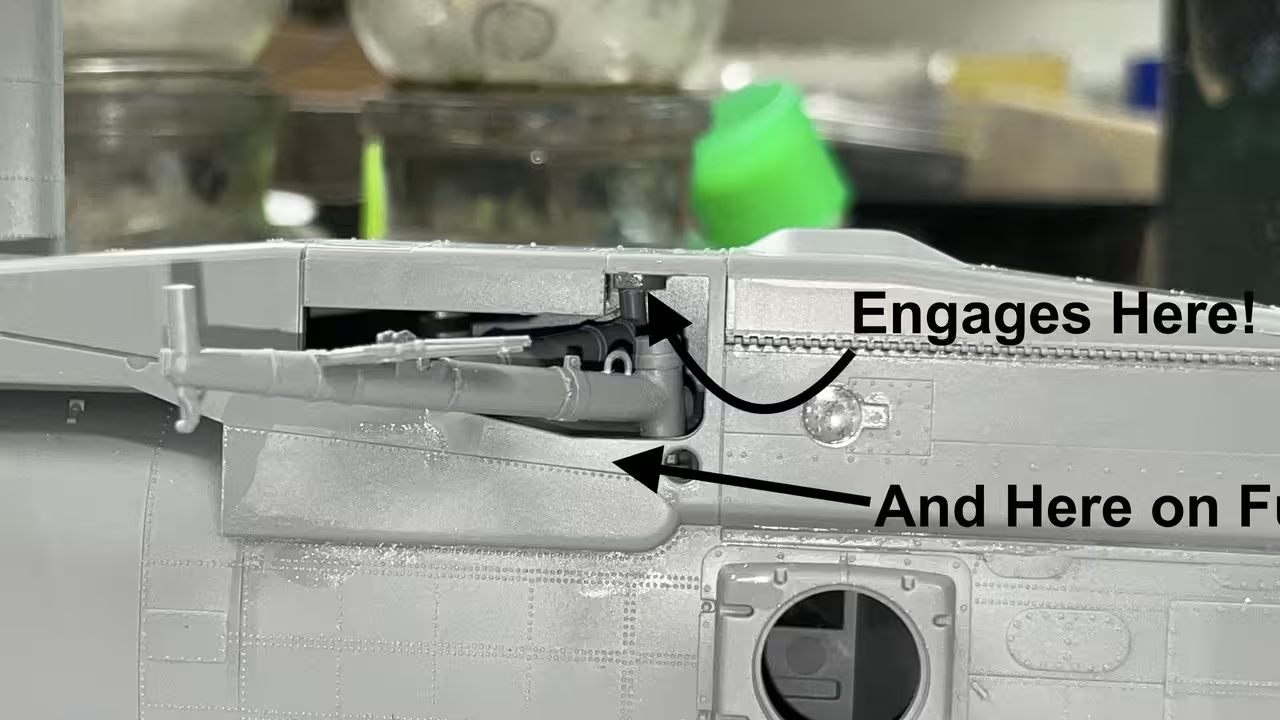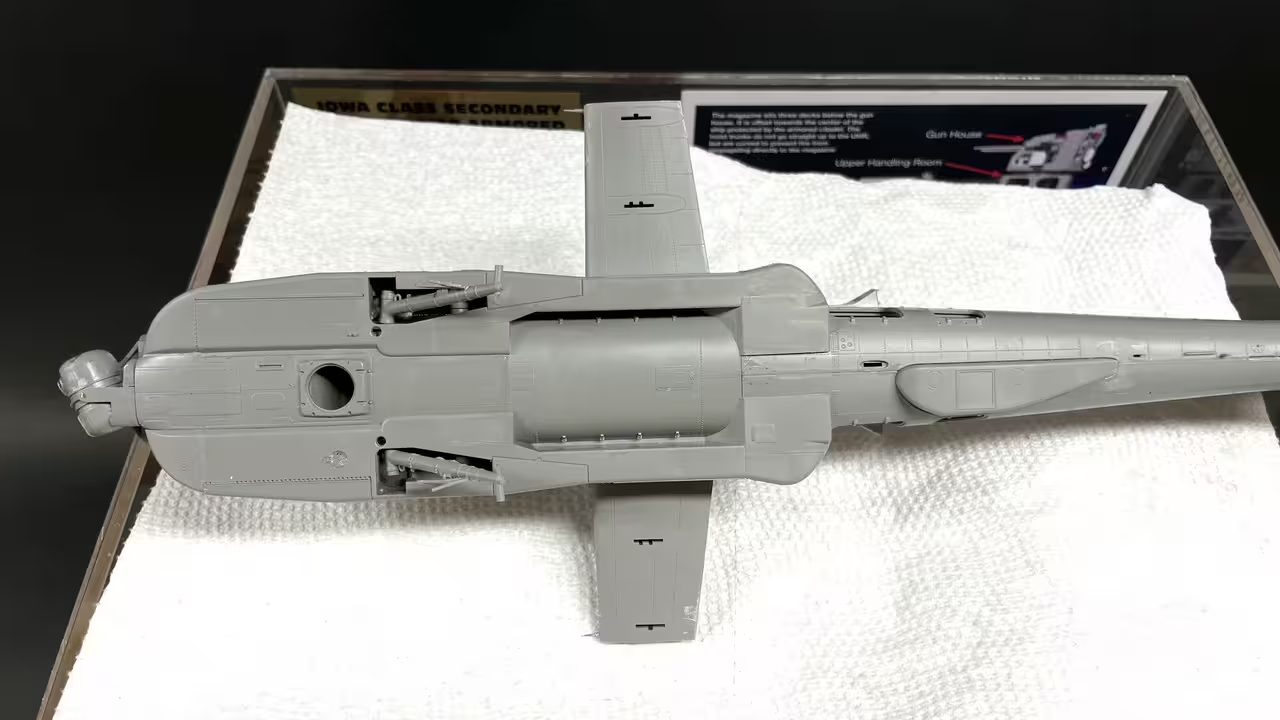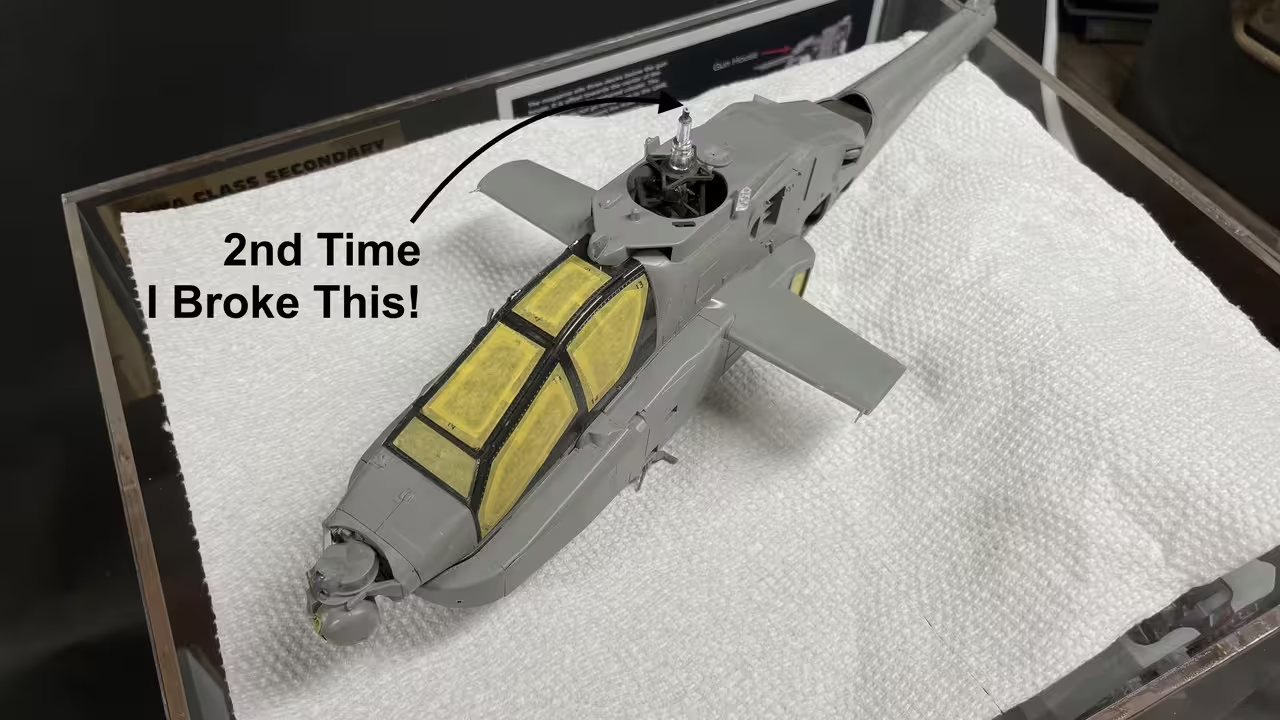Lots of diffierent things going on today. Before I get into that, my wife had radical breast surgery in January after a cancer had returned after 16 years. She had chemo afterwards to reduce the possibility that any renegade cells got away. Then last week she had a followup bone and CAT scan just to make sure nothing was going on. The CAT scan found a 1cm “Enhanced Nodule” in her liver. Panic ensured. She had an MRI to confirm what it was (or wasn’t) at 8 p.m. on Saturday night. Today we got the good news. The 8mm nodule is benign, basically harmless and will never turn malignant. We needed that good news!
First thing I did today was make a brass sleeve that will positively connect the broken mast section to the existing stub. I will modify the part that joins here so it accepts the sleeve.
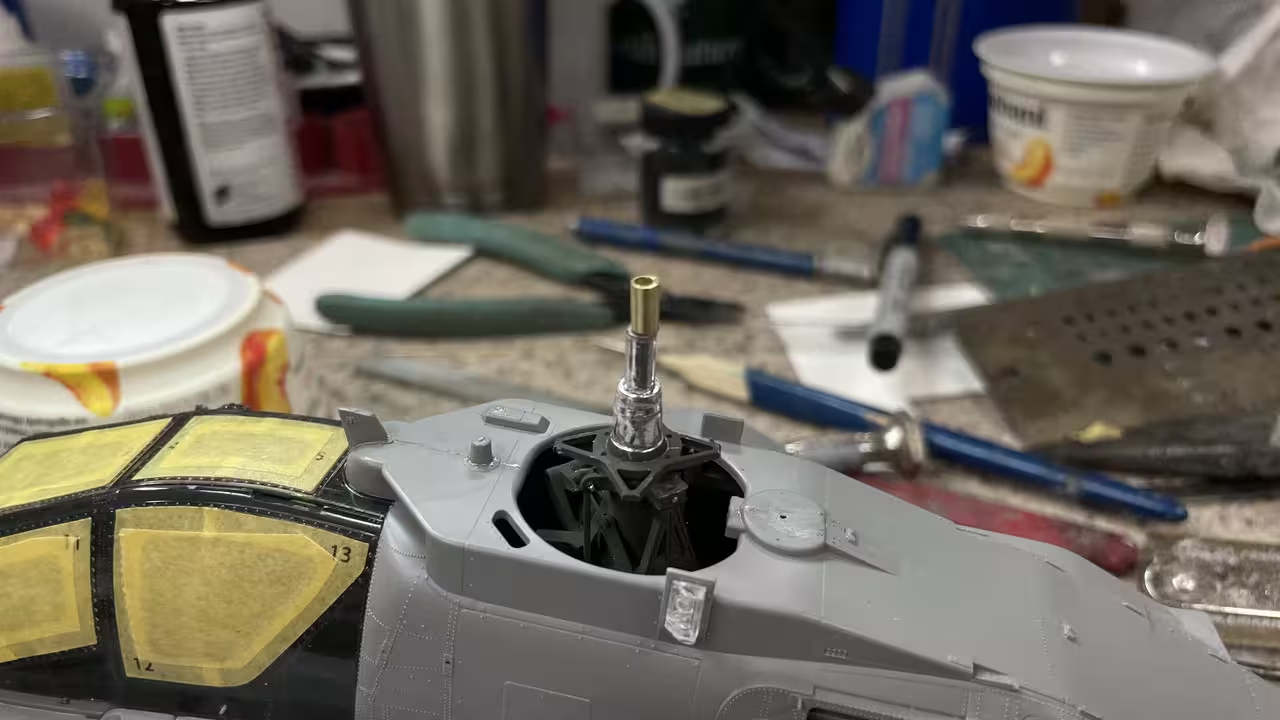
I then started working down the port side putting in the various and copious details contained in this model. The first was a grilled access cover. The instructions call out some internal pieces… you will never see them so I didn’t include them. The grills are on PE Fret A. There were three of them.


I installed them onto the part before gluing the door to the fuze. I used Tamiya Gel CA. Gel CA gives you a lot of working time, doesn’t wick where you don’t want it and cures quickly with a tiny bit of accelerator when you’re ready for it to set. The round one got a little banged up in this operation.
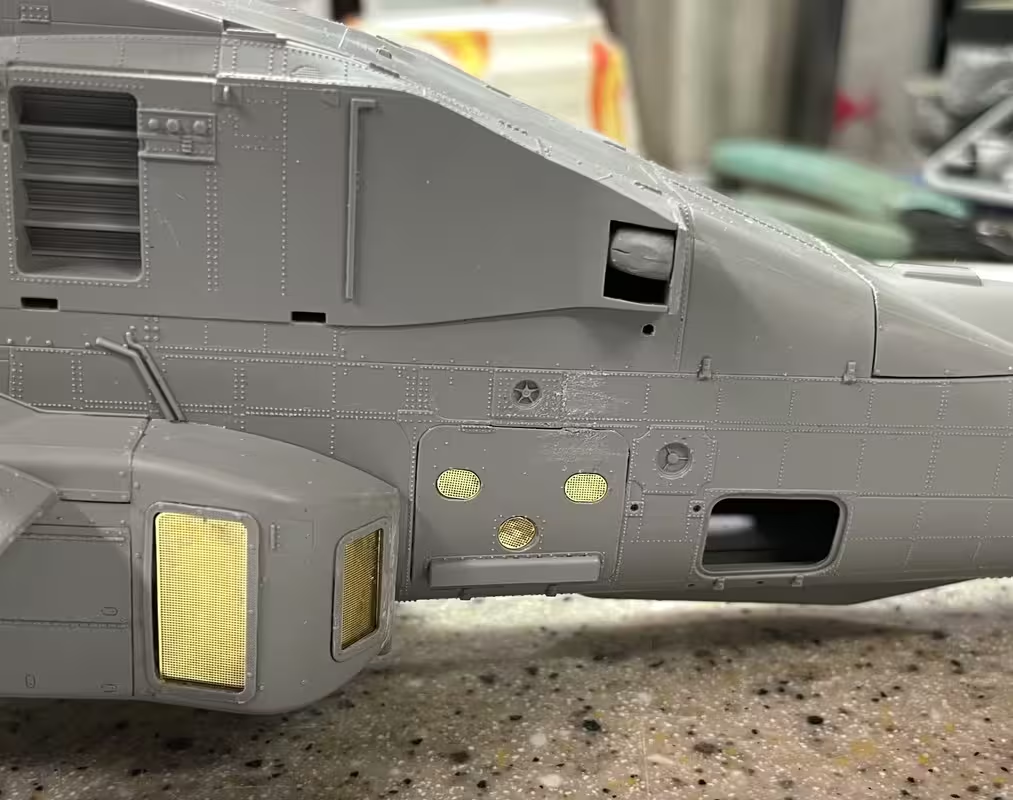
Next up were mounting blocks for some countermeasure sensors. Takom couldn’t just injection mold the part with the bolt patten behind it. Nooooo… they had to have a PE flange that sandwiches between the two-part styrene and the fuze. This precluded using Tamiya thin cement to do the gluing, which was now done with gel CA.
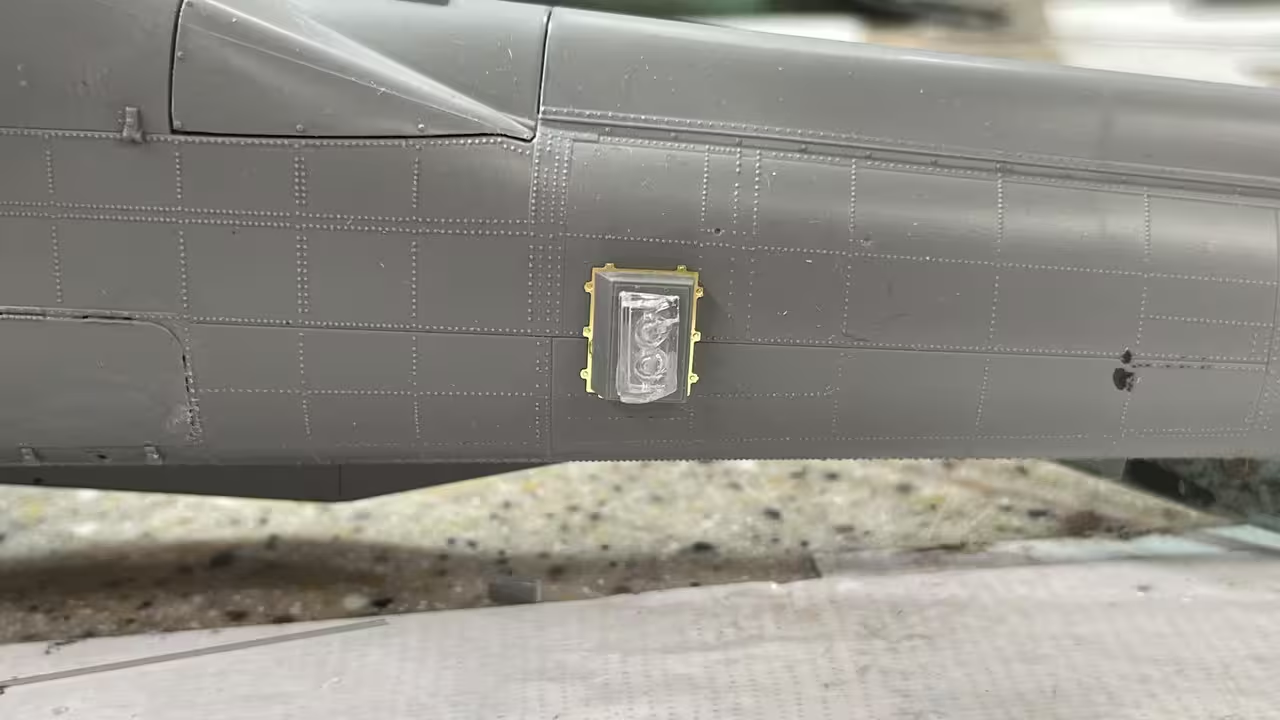
And then there was another styrene/PE composite part with this odd, rear-facing vent… Anyone know what it is? Tail rotor Oill Cooler??? And again, had to put it togther with gel CA. I used the Small Shop Little Bender for this small PE job.

That finished the port side for these things. The starboard side has similar components. In this case, just for fun, I added the internal, unseen details on the access door.
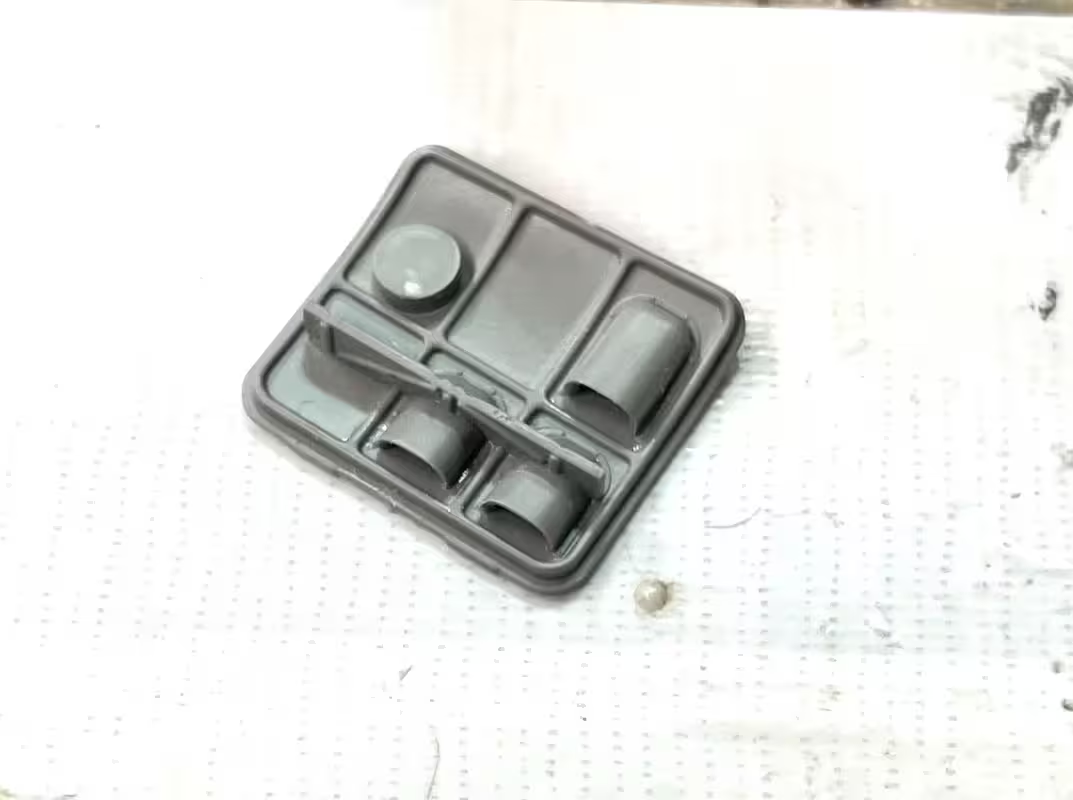
Lots of stuff and a waste of time unless you like gluing stuff for fun.
This side had it’s own passel of PE grills.
This step also called out of a very frail, 2-part, styrene antenna structure. I didn’t give it a second thought. I was going to replace this part with metal. It wouldn’t last five minutes with the way I build models. It measured 0.031" in thickness, which is very closse to 0.032" wire I have. I have an American Beauty Resistance Soldering Unit that makes putting together precision soldered assemblies enjoyable.

Holding the stock against the master I marked where the bends would go and use a jeweler looping pliers to give smooth and accurately placed bends.
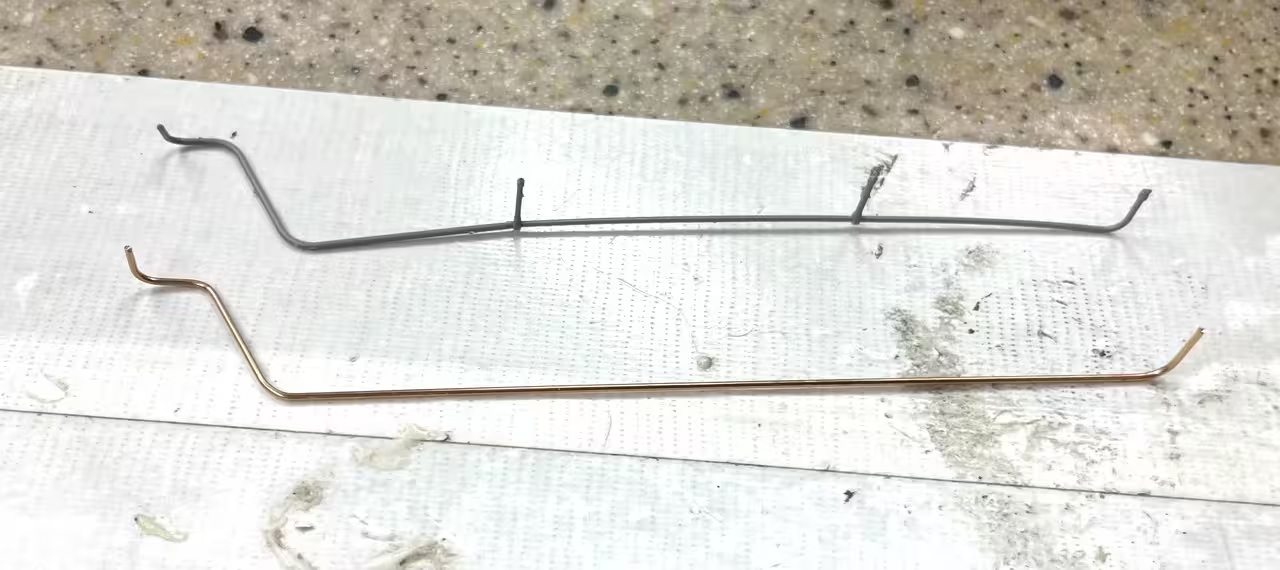
For the support brackets (also measuring the same size), I first flatten an end to form the attachment loop. I use a very old, very strong, very reliable Vise Grip, that must be from the 1960s (my dad’s) and with the jaws at fully-closed locked position, keep squeezing the stock and turning it over and using the side entry and front entry to the jaws to get it as flat as possible.
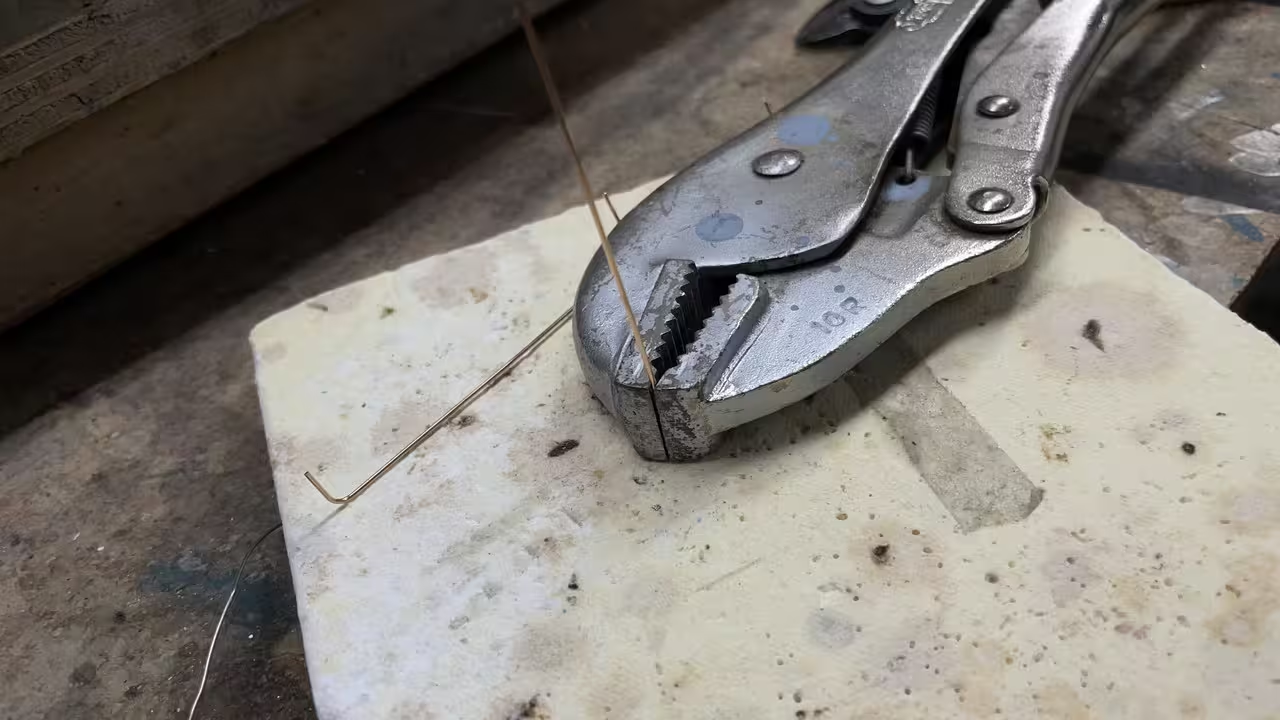
Here’s how the flat looks.
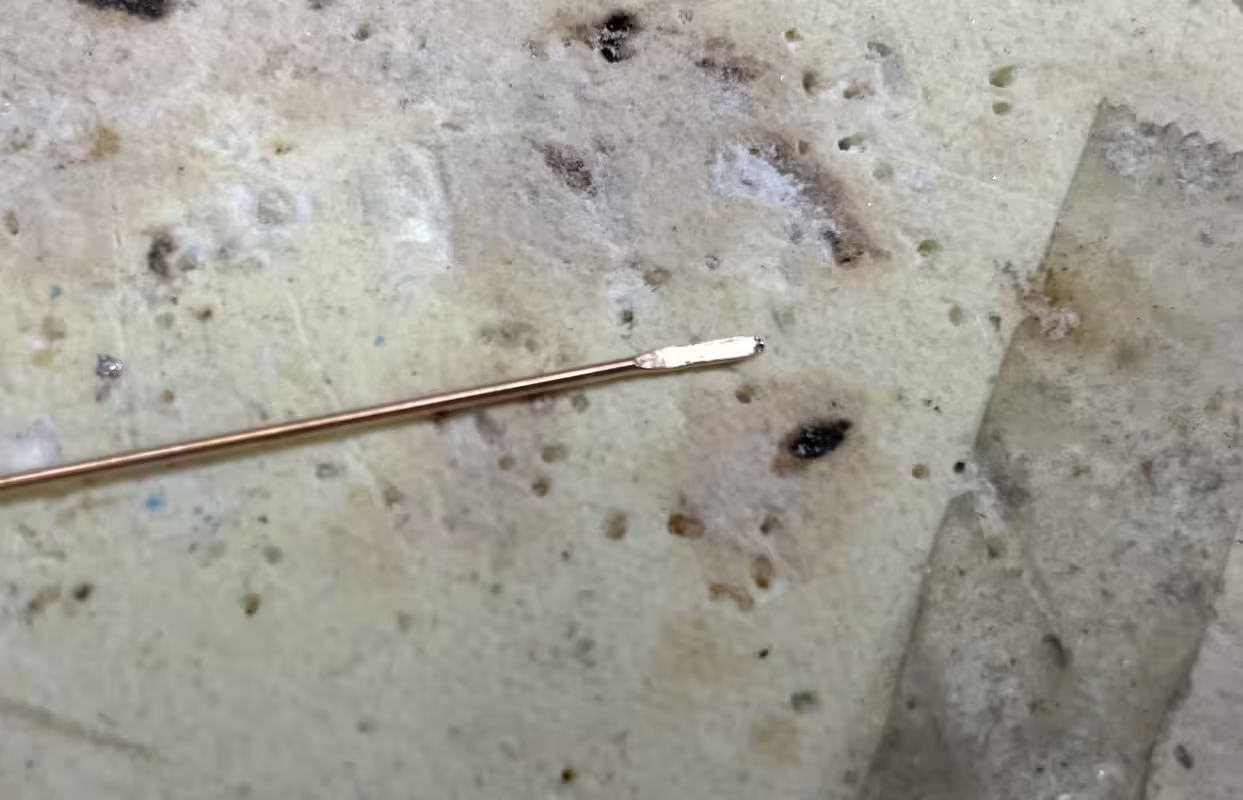
After forming the loop, trimming any excess preventing full closure, I trapped the rod in the joint, and then, using a MicroMark ceramic soldering pad, setup the job to be soldered. With the RSU, the joint is made in seconds. I use very fine gauge rosin core solder (.5mm).
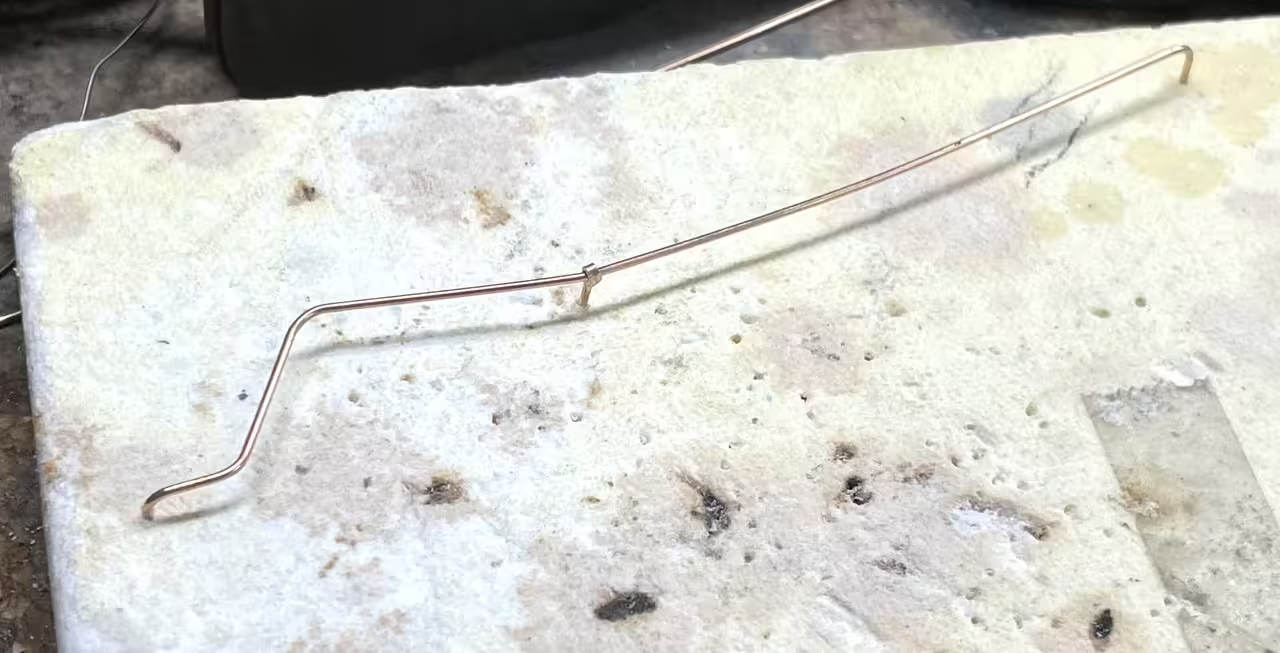
I’m pleased with the final result, and although it might miss some small details, it will survive handling and the 700 mile trip.

I have some 3D printed fitting that I’m going to use for the right end. There’s a plastic kit part that was supposed to glue there, but I’m going to change that.
So it was a pretty good work day…
![]()
